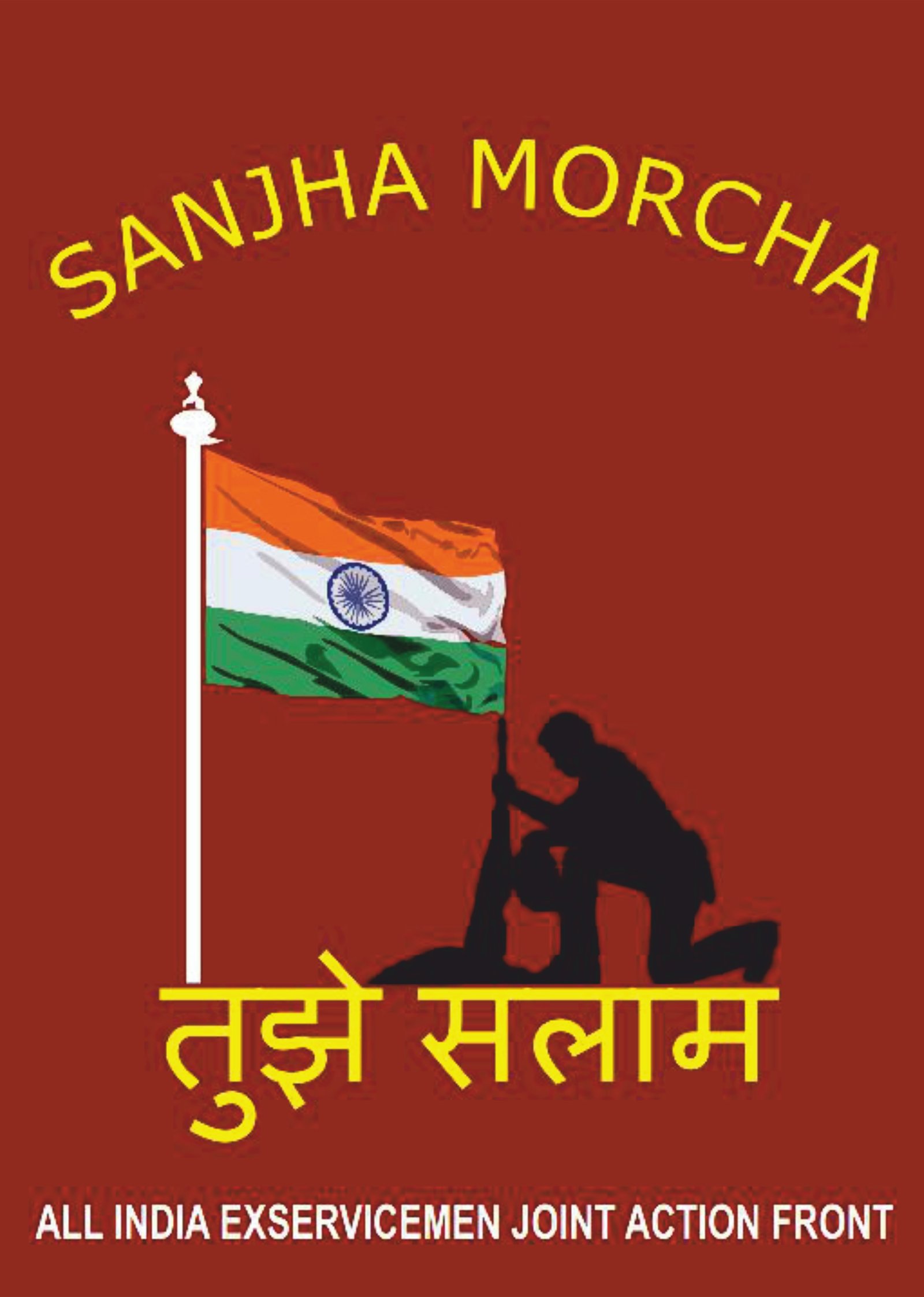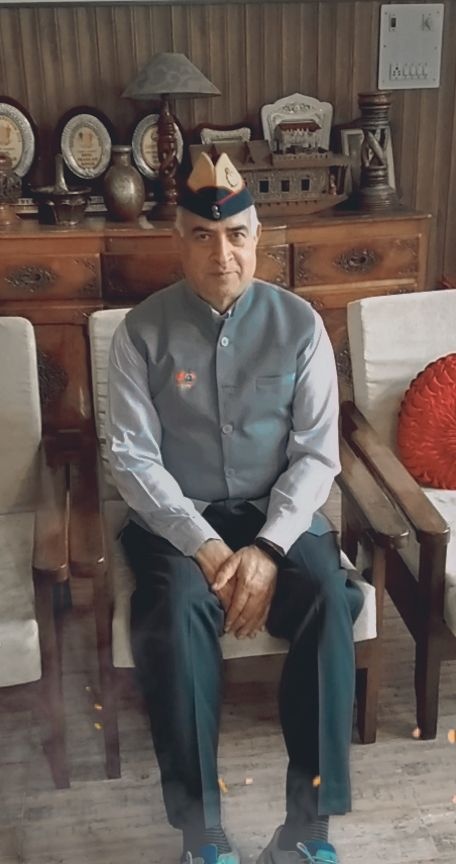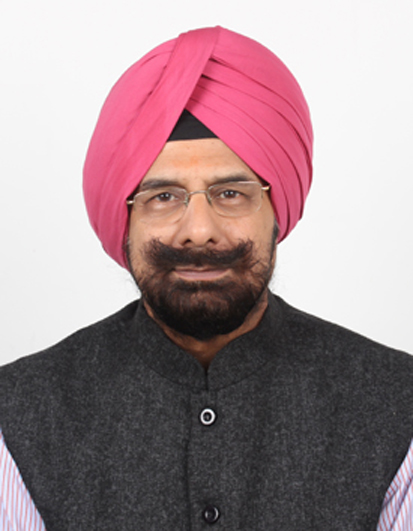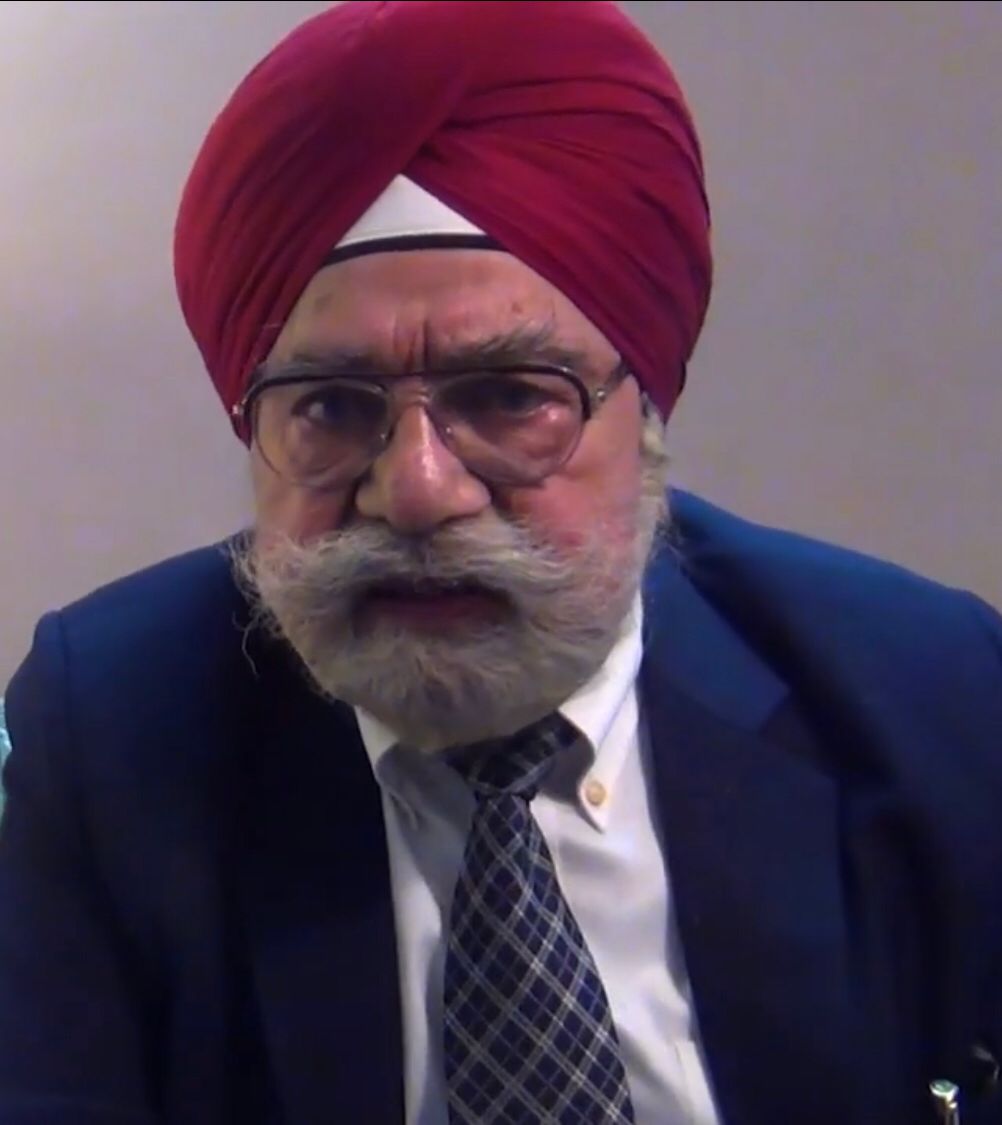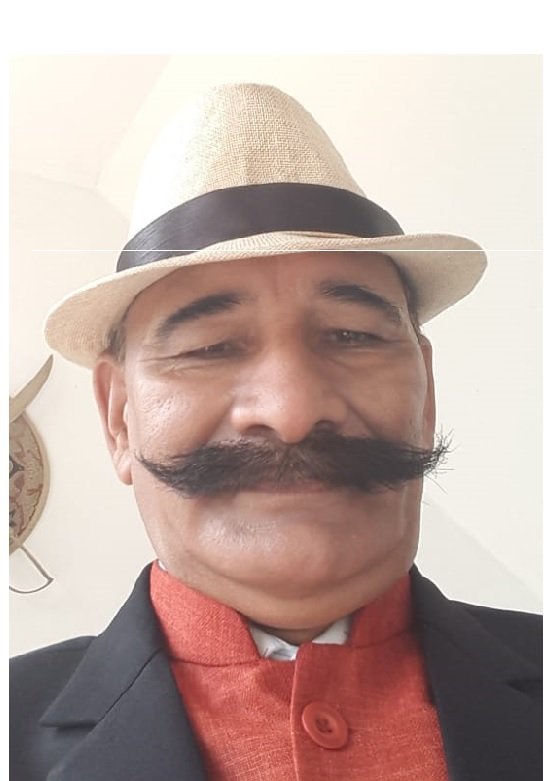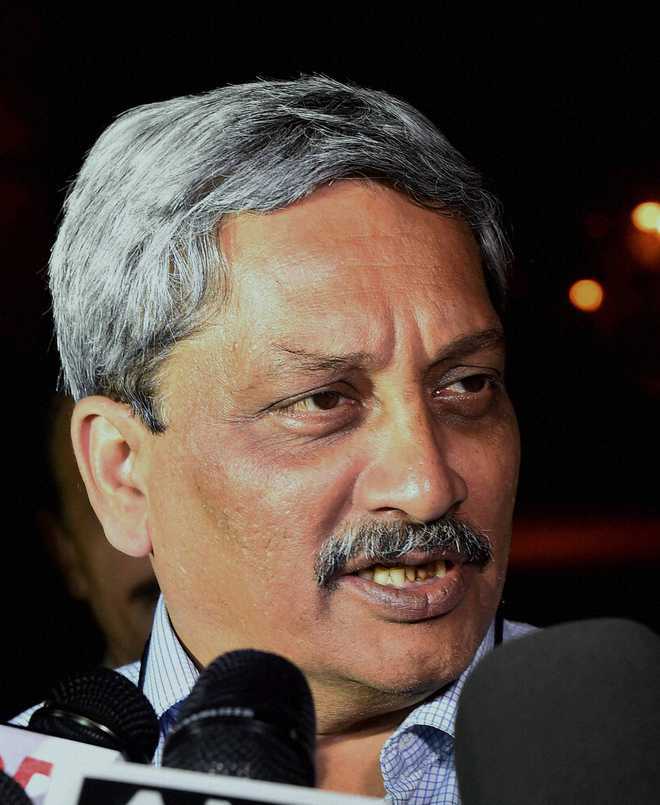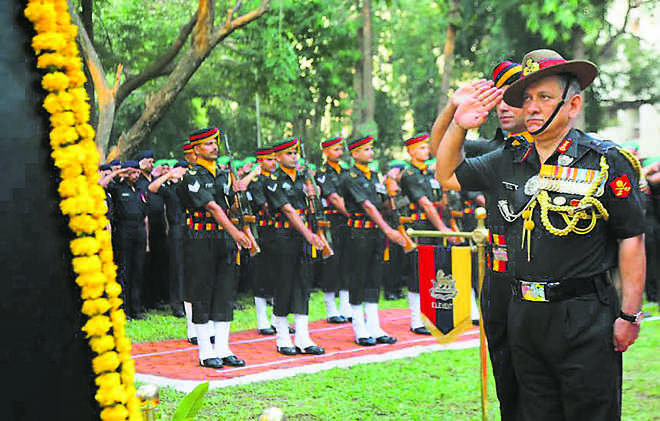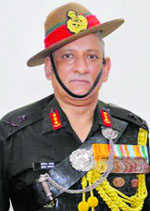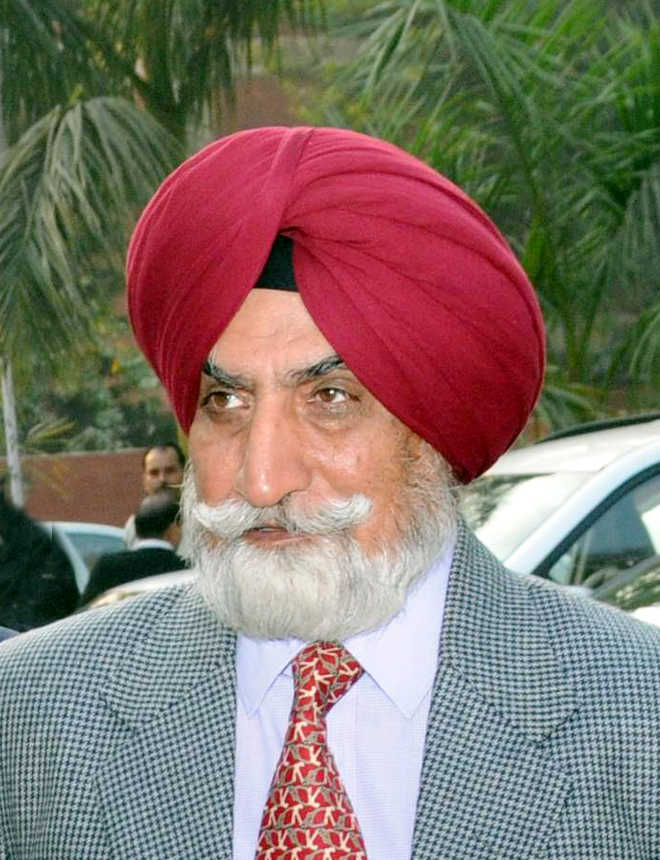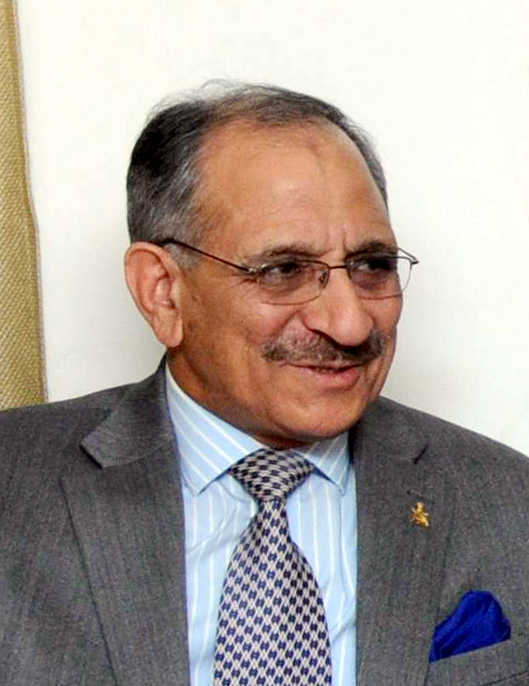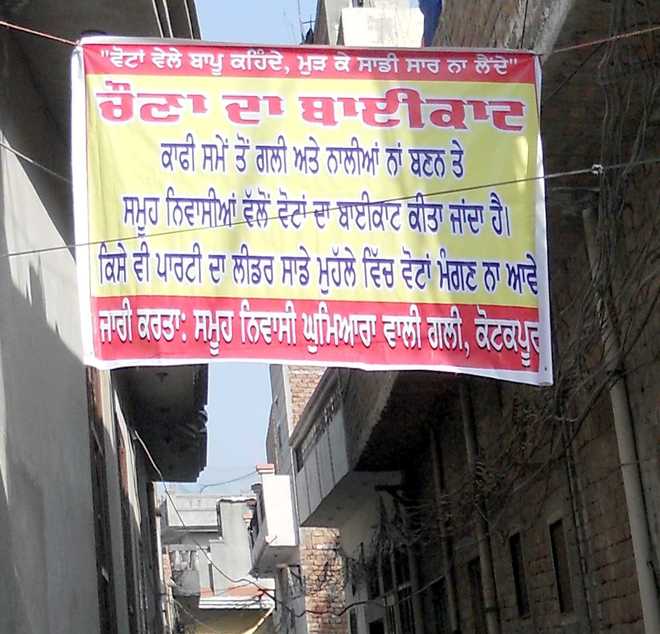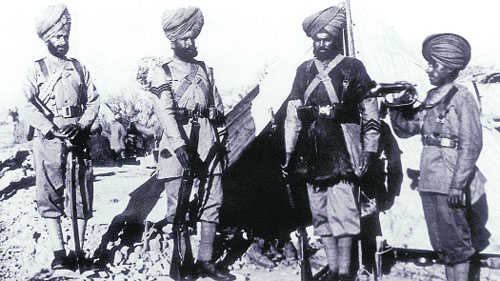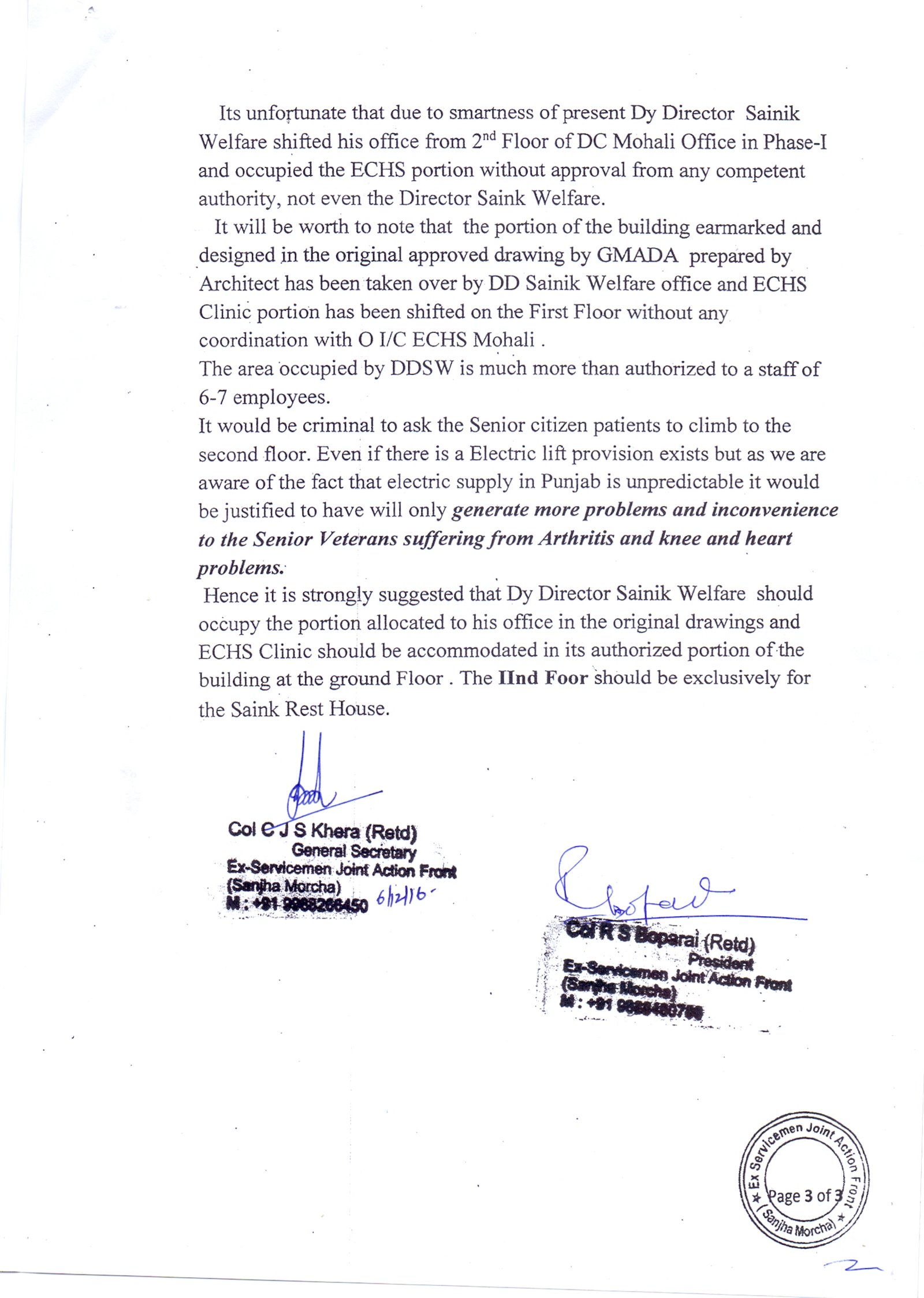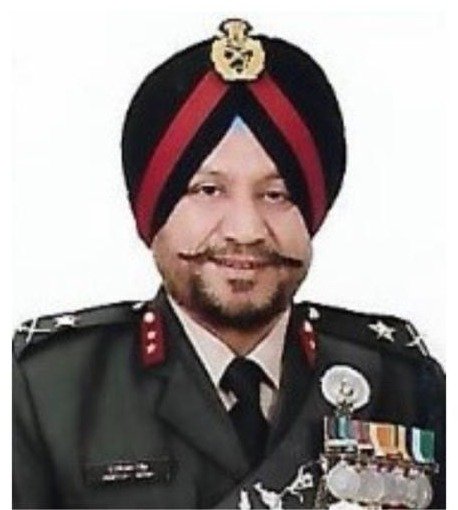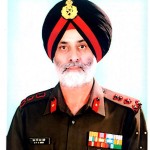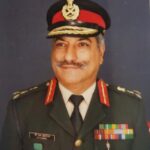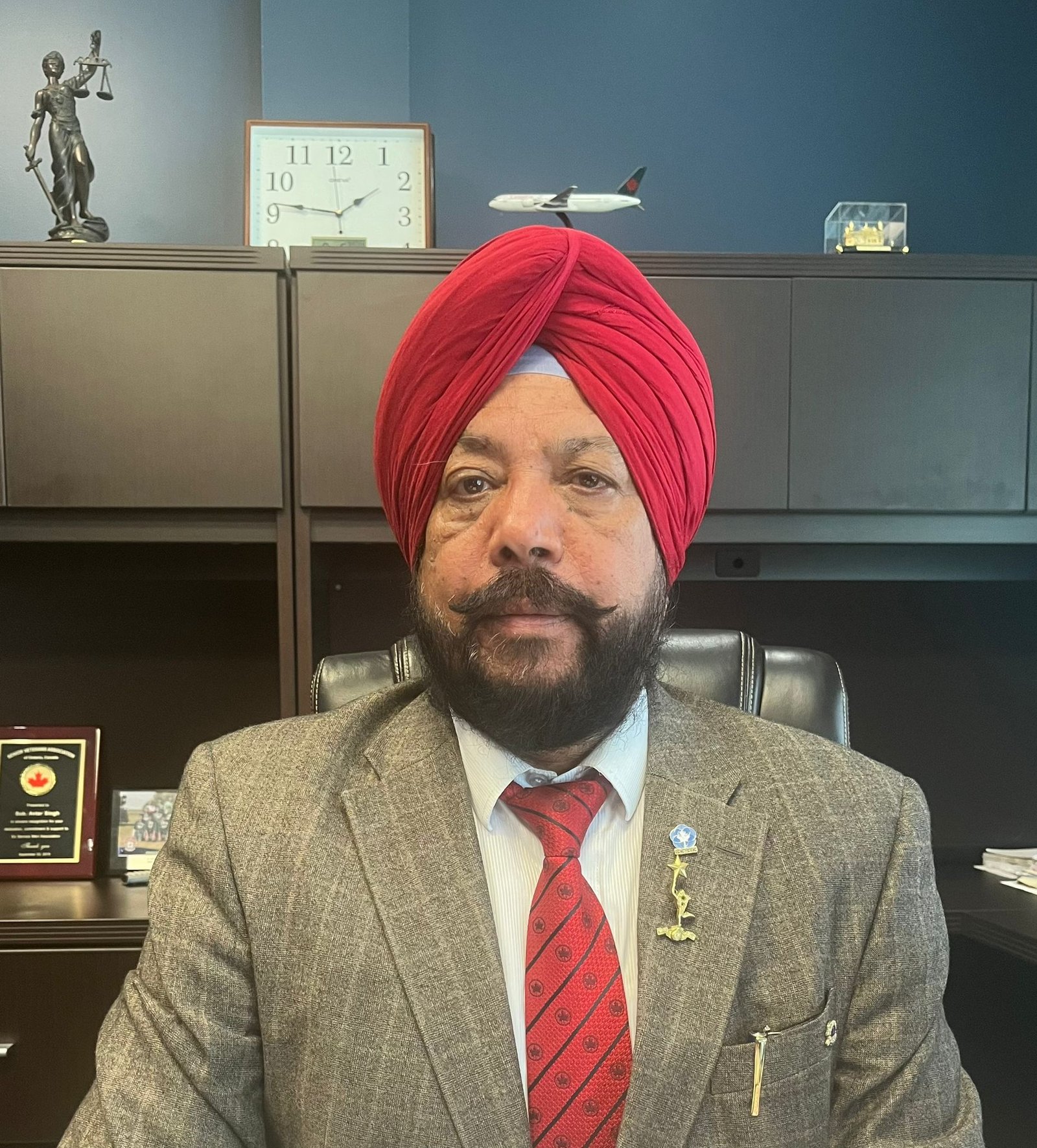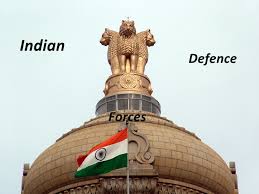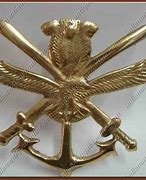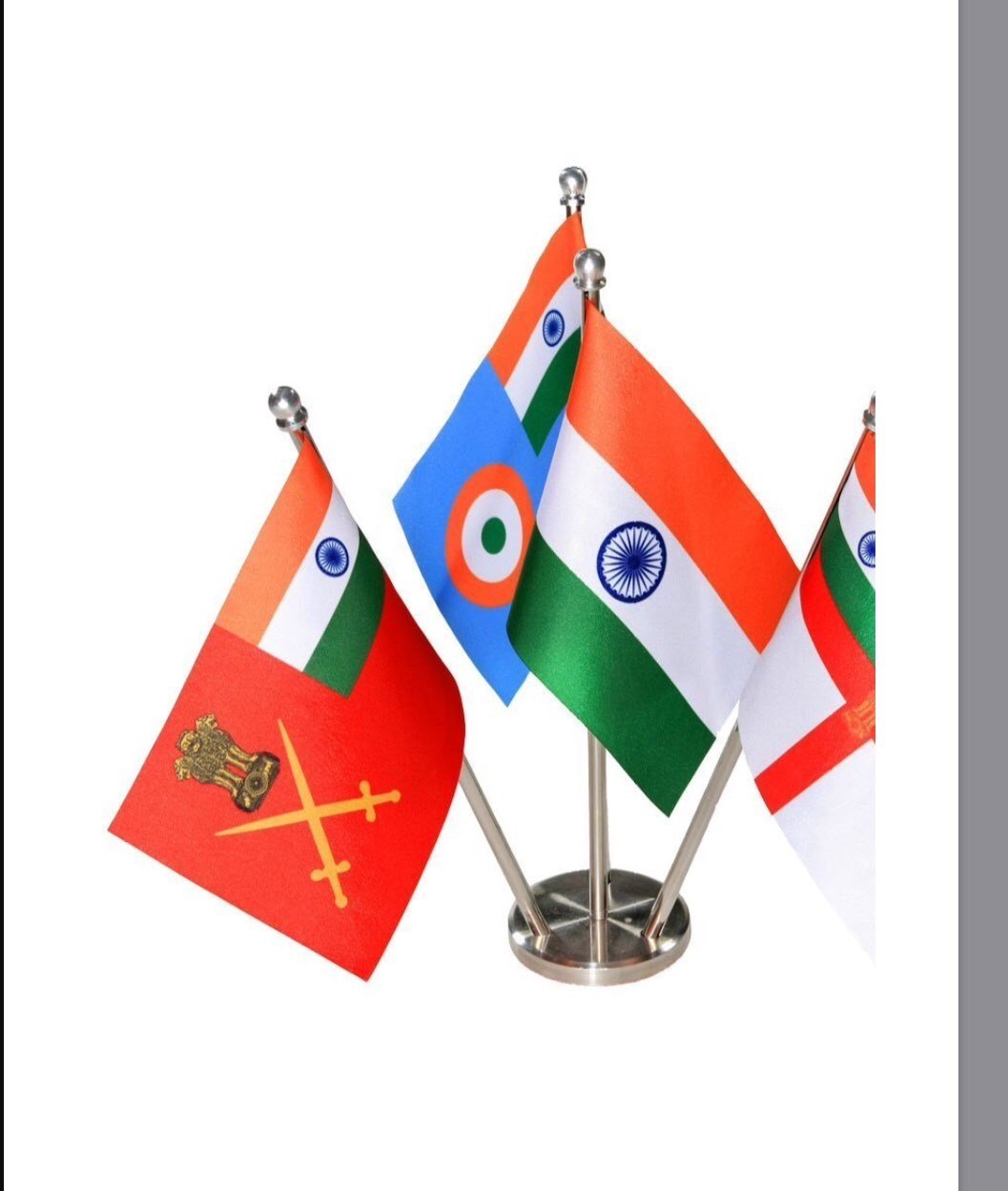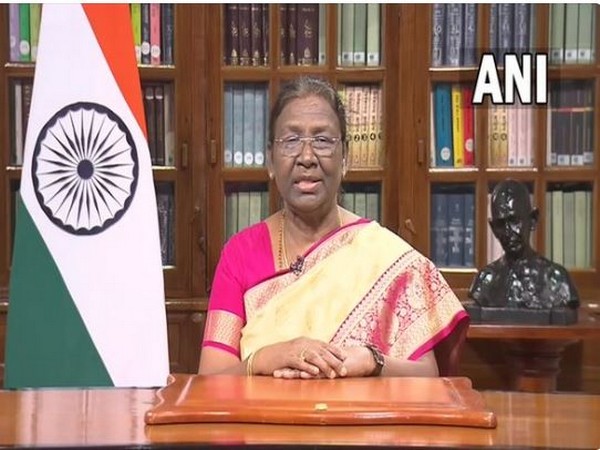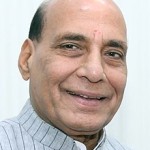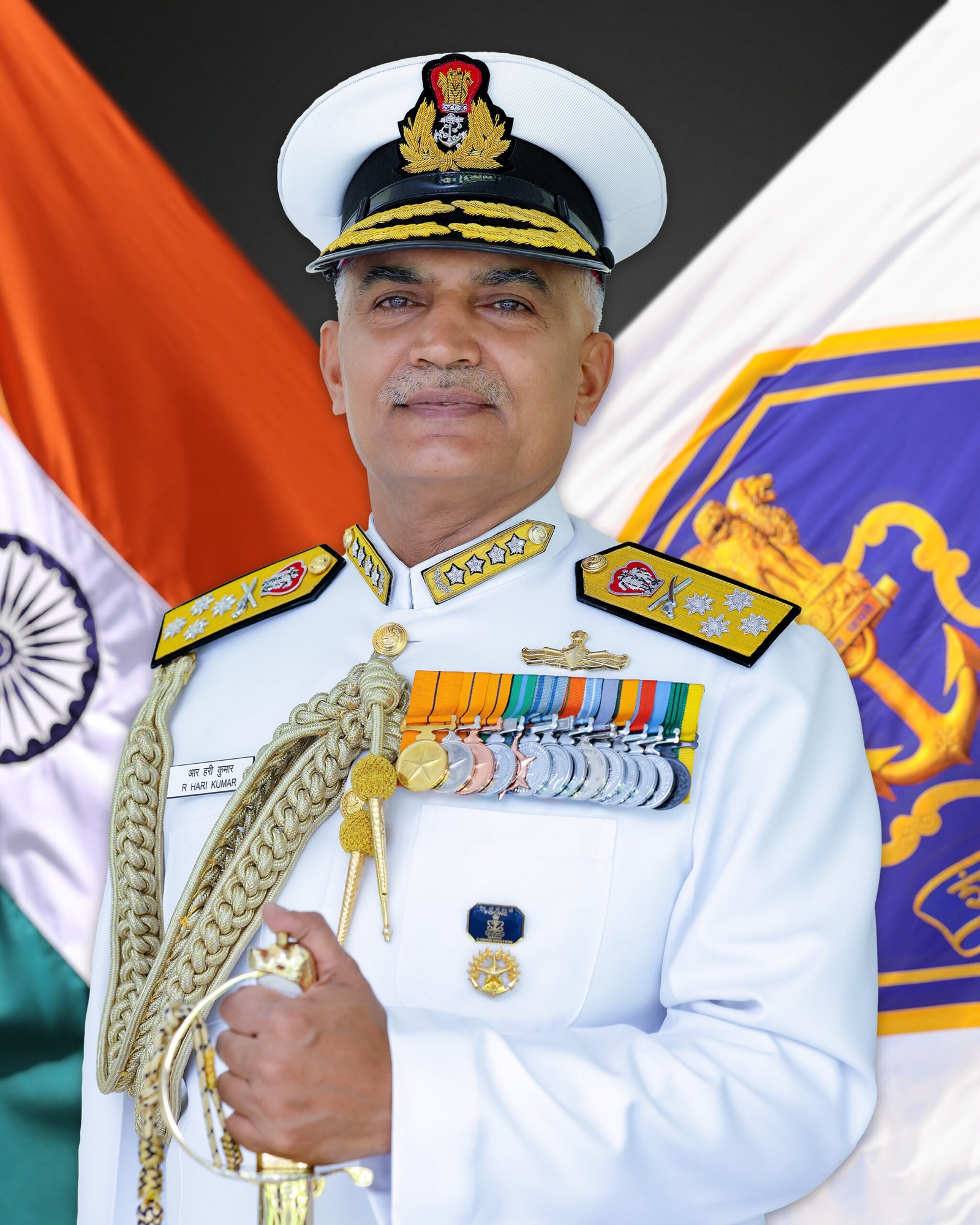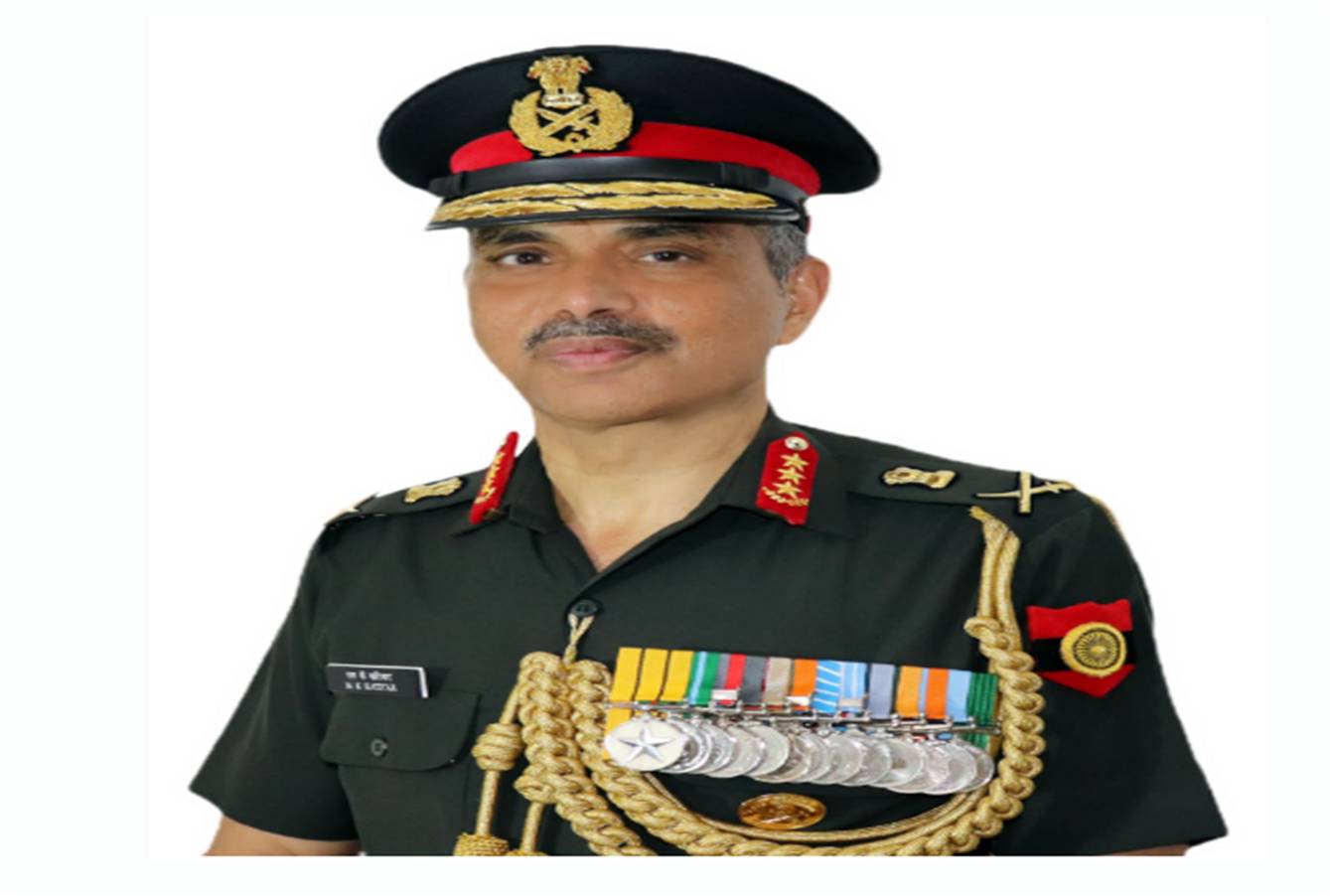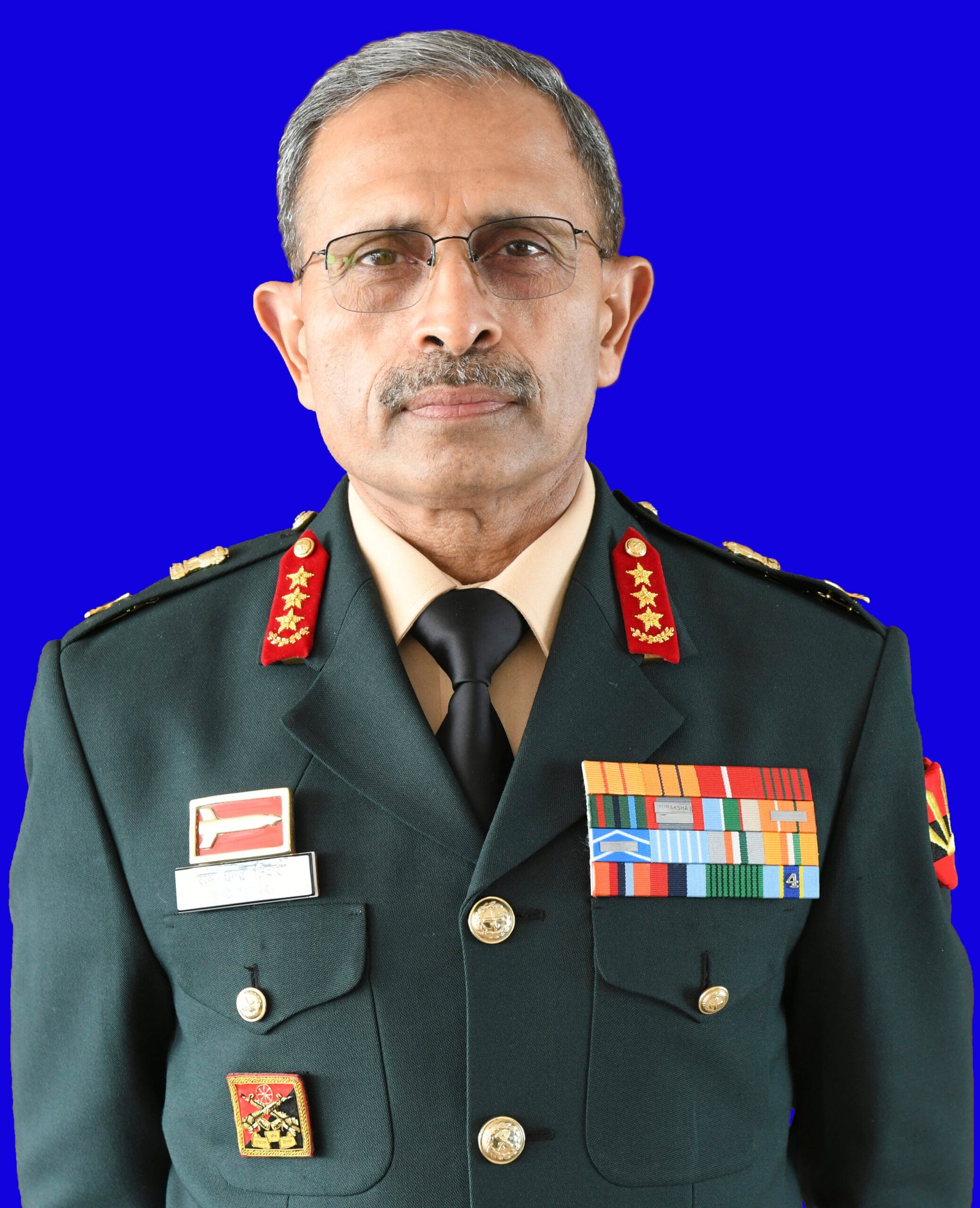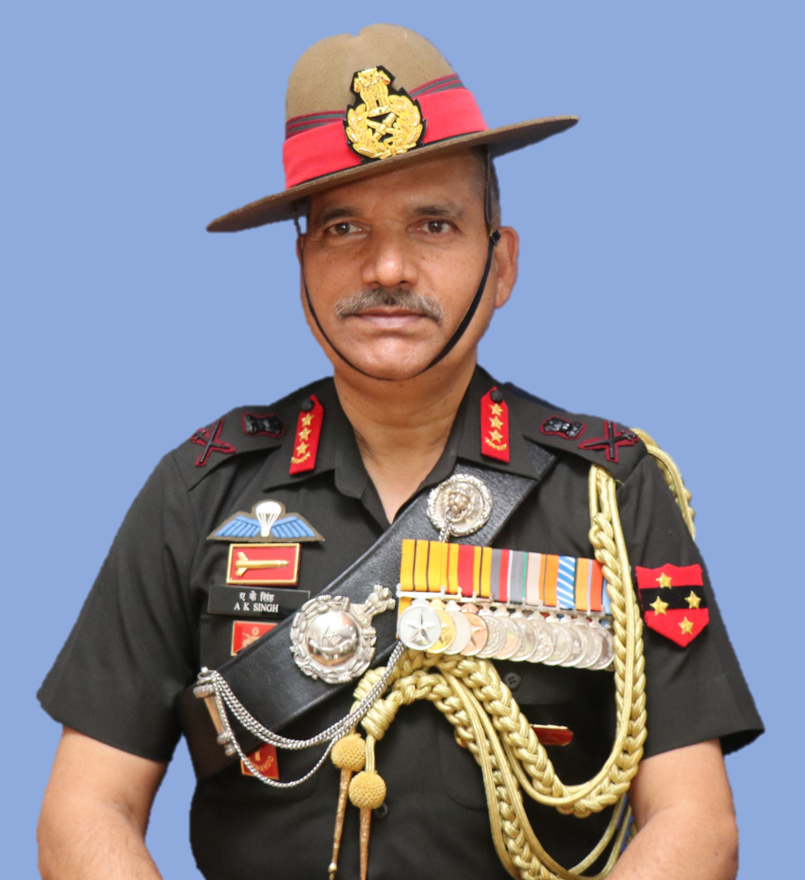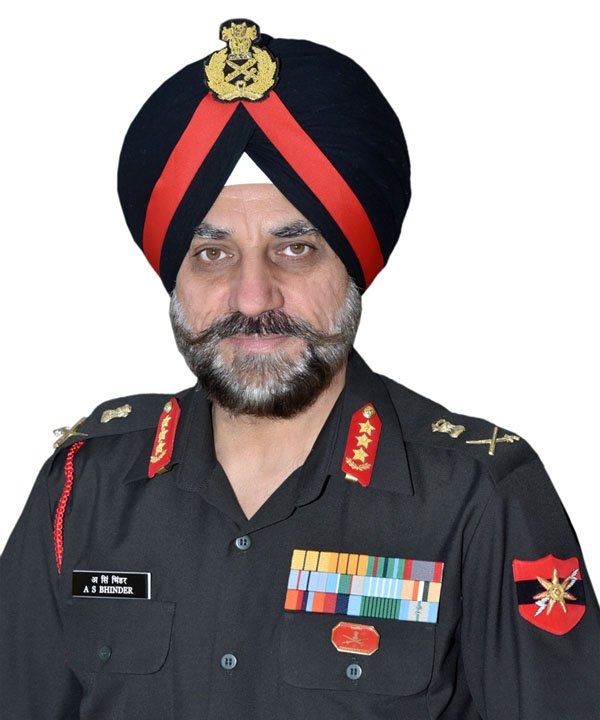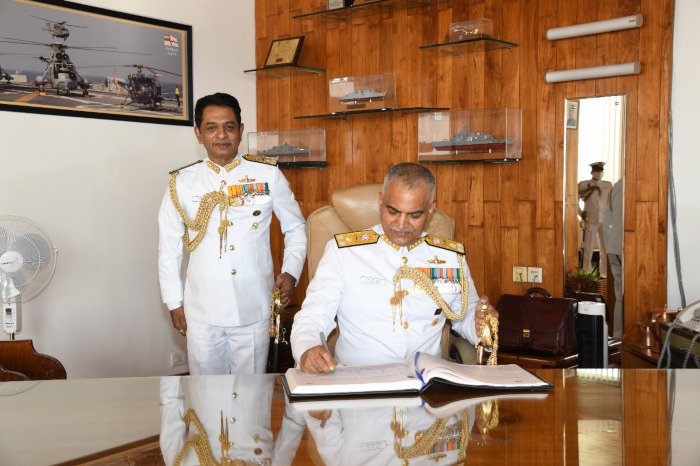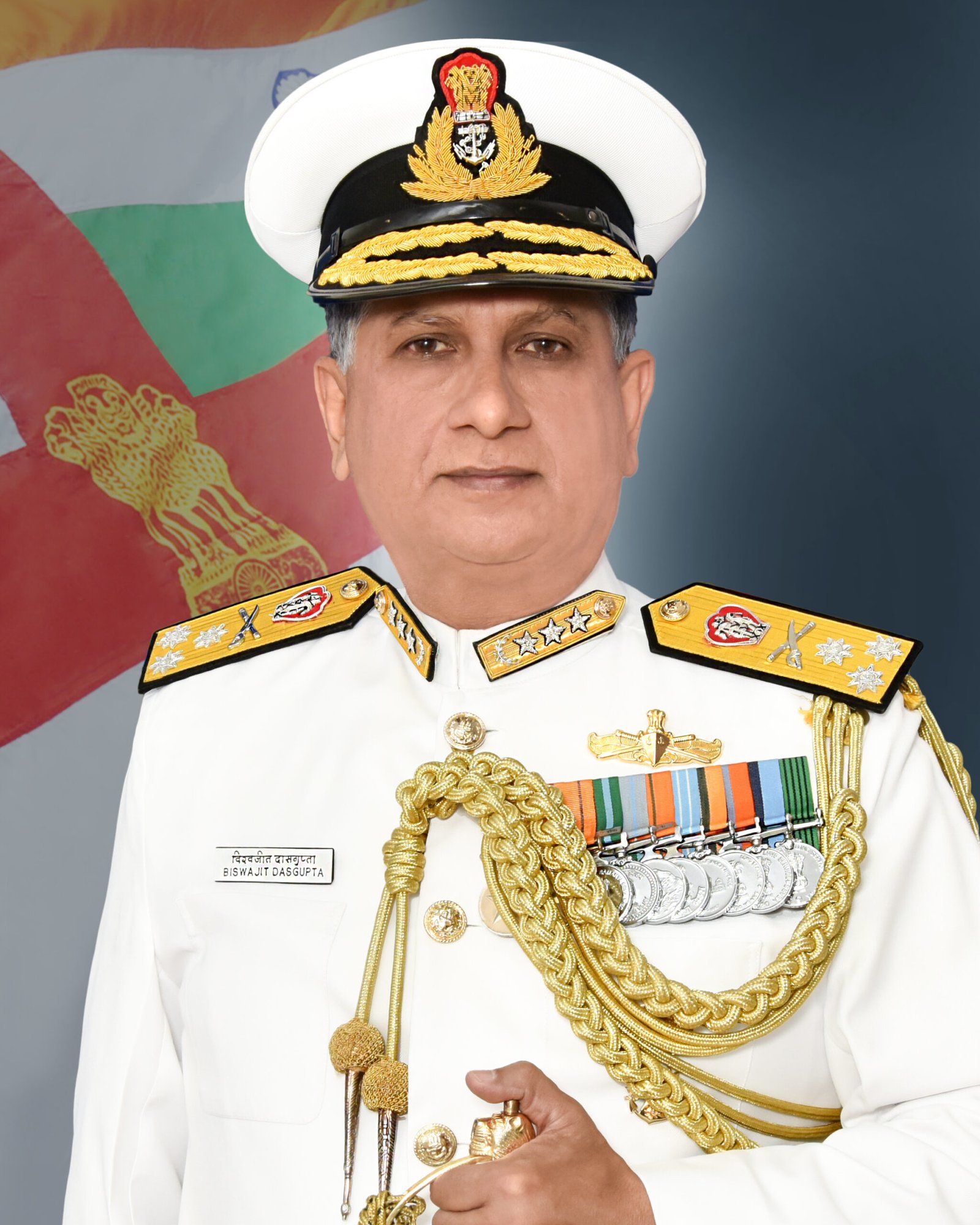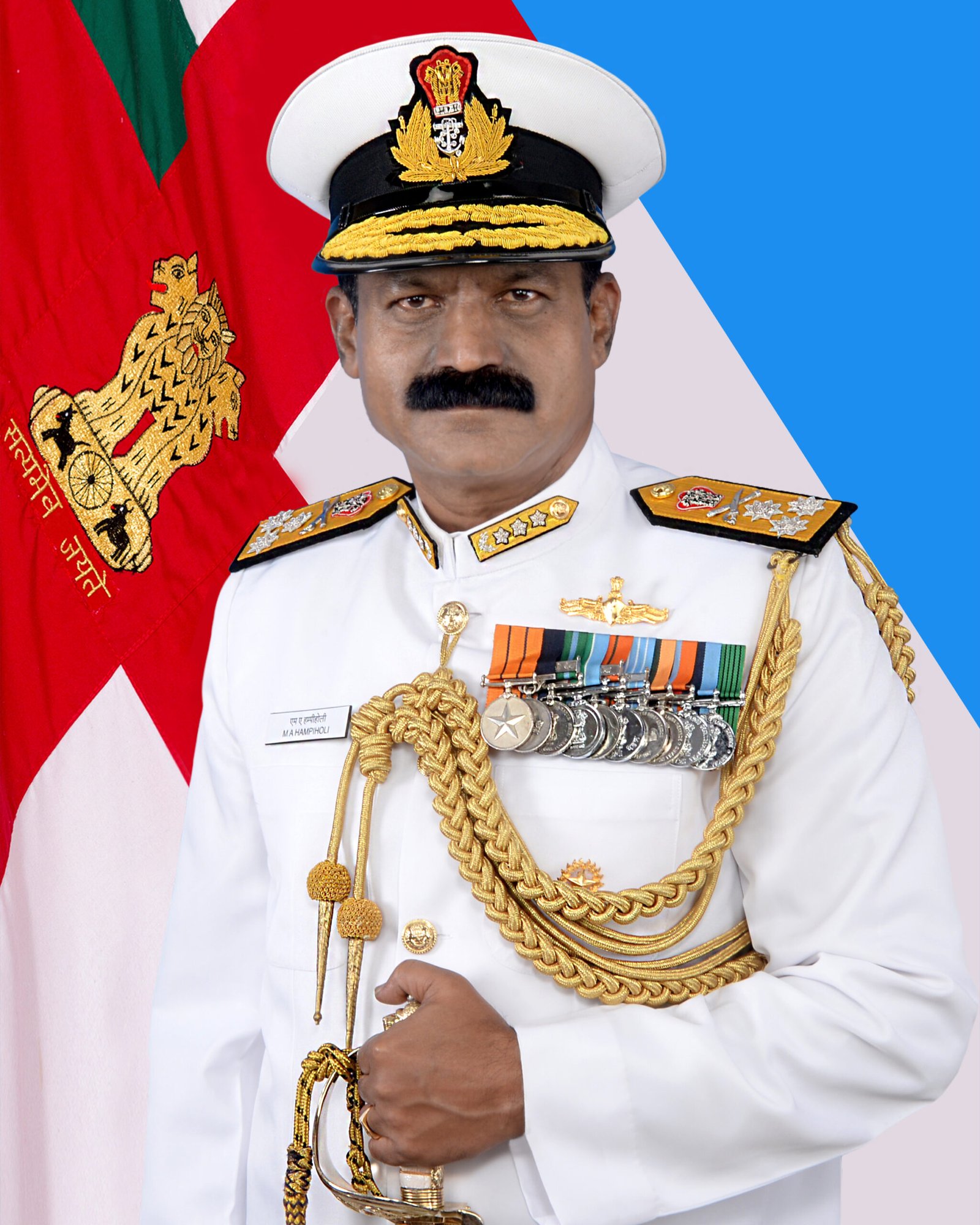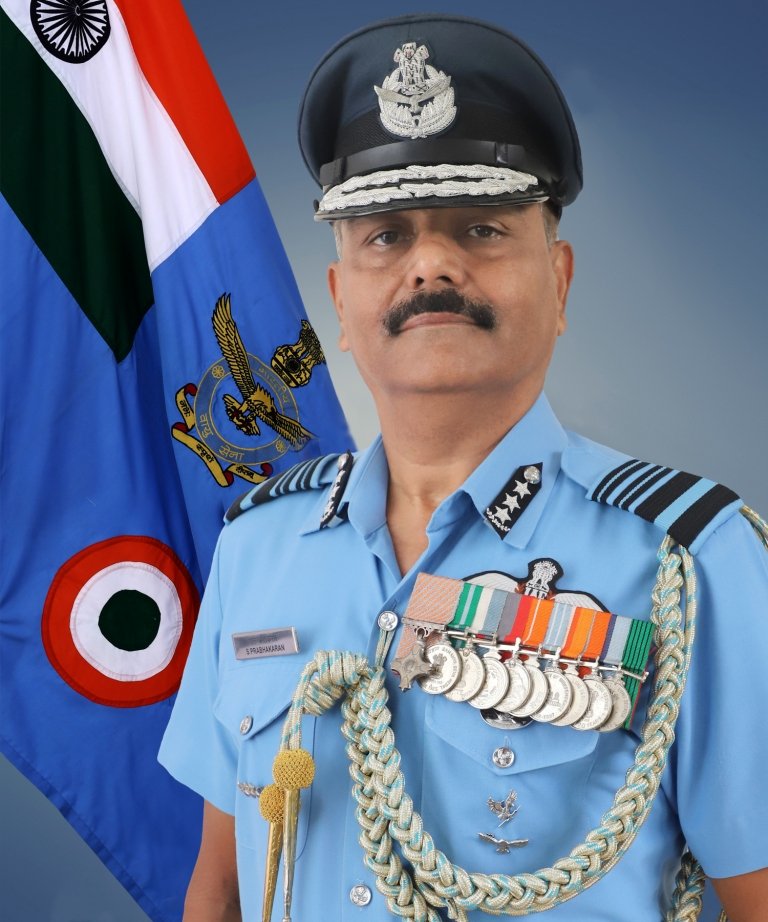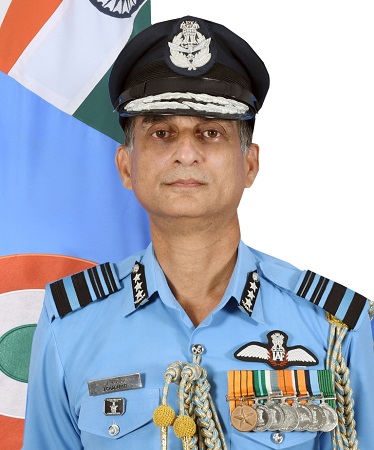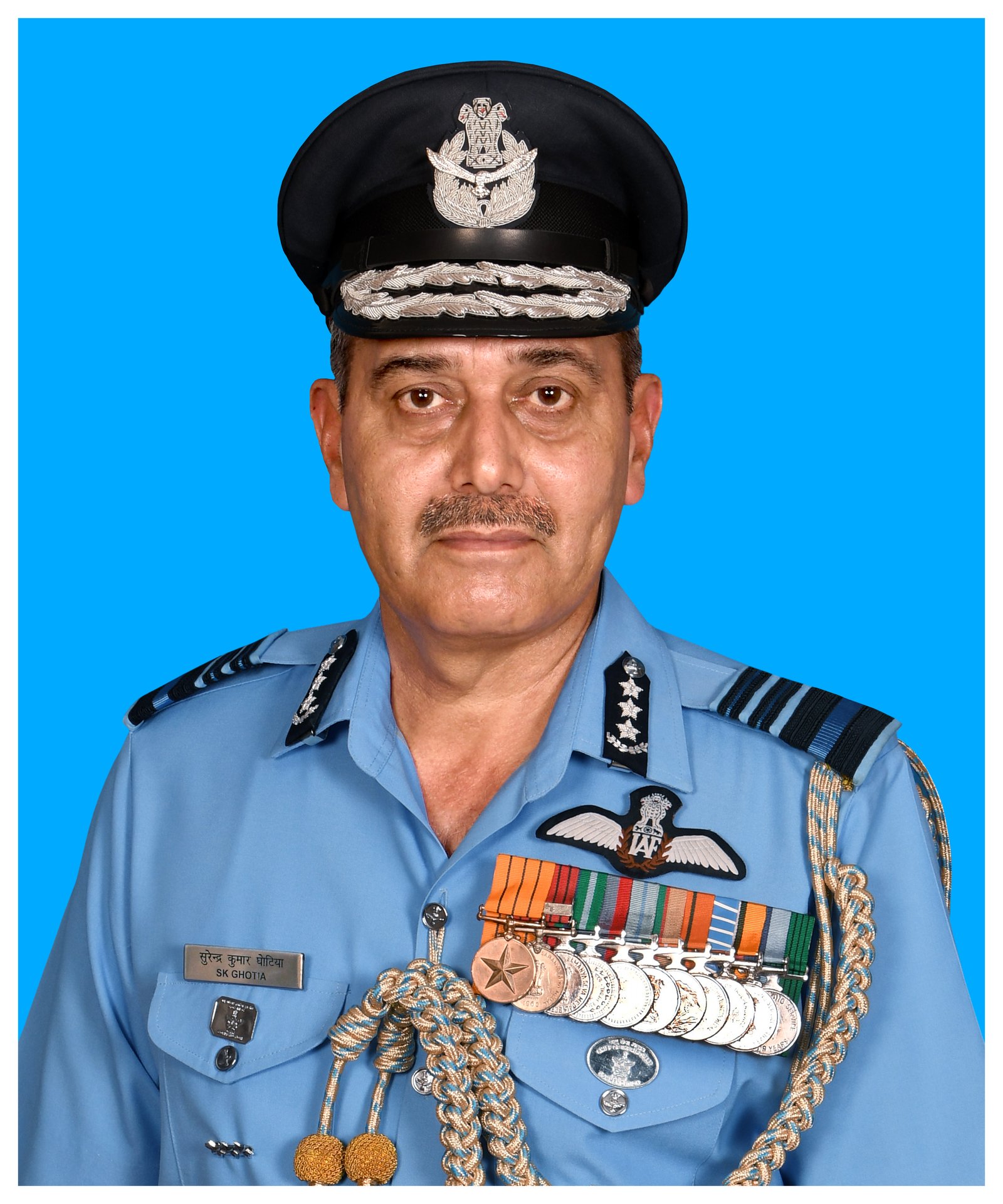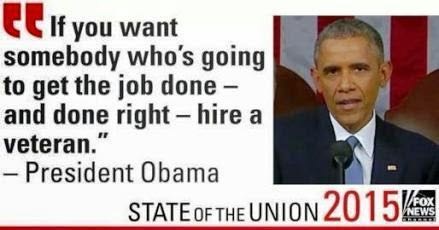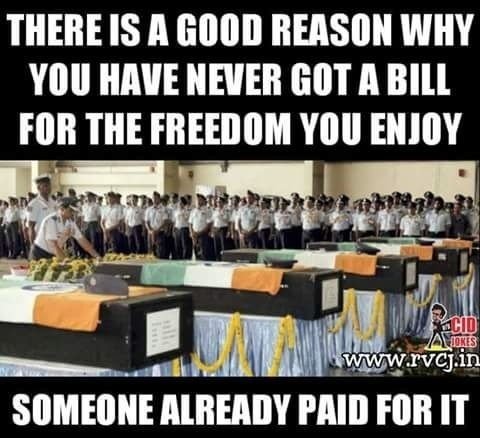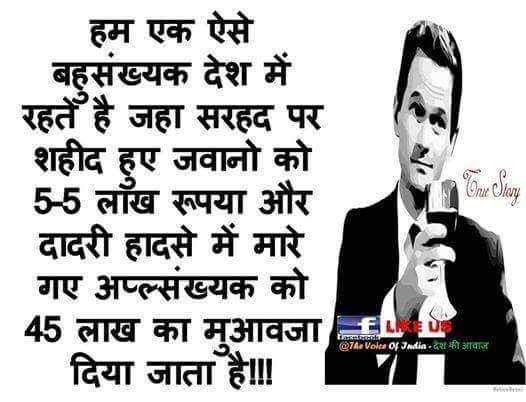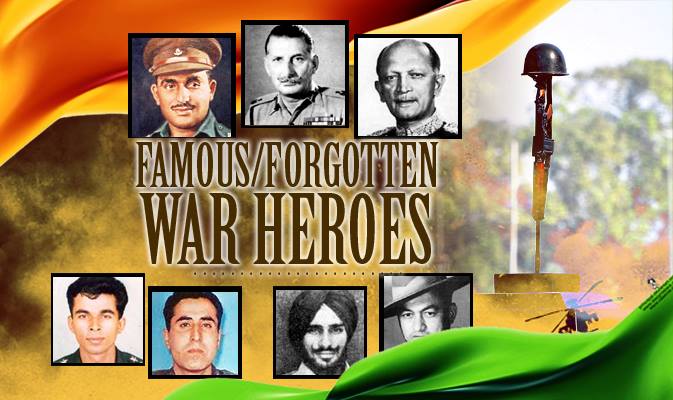CM aide’s sons thrash eatery staff for not giving free food
Humiliated by the accused, the eatery owner went missing and he sent voice messages on WhatsApp groups, saying he is going to end his life
The accused called nearly 100 of their accomplices at the spot, who continued threatening us for an hour GURPREET SINGH, son of the owner
LUDHIANA: In a blatant display of political influence and highhandedness, Youth Akali Dal leader Ravinderpal Singh Minku along with his brother Sadhu Singh, sons of Bhagwan Singh of Gurmail Medical, a close aide of chief minister Parkash Singh Badal, and their accomplices thrashed a chicken corner owner and his sons for not delivering food, free of cost on Tuesday night.
 JS GREWAL/HTFamily of the victim protesting against the attack on Aman Chicken Corner outside the police commissioner’s office in Ludhiana on Wednesday.
JS GREWAL/HTFamily of the victim protesting against the attack on Aman Chicken Corner outside the police commissioner’s office in Ludhiana on Wednesday.
In the scuffle that ensued, the accused tossed the turban of Gurjinder Singh alias Bittu, owner of Aman Chicken at Jagjit Nagar near Shastri Nagar railway crossing. After the incident Bittu went missing. He sent voice messages in different WhatsApp groups, saying he is going to end his life. He held Ravinderpal Singh Minku, his brother Sadhu Singh and their accomplices responsible for driving him to take the extreme step. The entire incident was captured in the CCTVs installed at the eatery.
The Sarabha Nagar police have registered a case under sections 323 (voluntarily causing hurt), 451 (house-trespass in order to commit offence), 506 (criminal intimidation), 148 (rioting, armed with deadly weapon), 149 (every member of unlawful assembly guilty of offence committed in prosecution of common object) and sections 25/27/54/59 of Arms Act against Ravinderpal Singh Minku, Sadhu Singh, his accomplice Danny and others, who are yet to be identified, following the statement of Manpreet Singh, son of Gurjinder Singh Bittu.
Gurpreet Singh, younger son of Bittu, said on Tuesday night at around 11pm, Sadhu Singh made a call to their manager Ashok Kumar and asked him to deliver non-vegetarian food in Model Town Extension for free within 2 minutes. When the manager refused to deliver any food item for free, the accused started abusing him.
The manager also told Sadhu Singh that it being Tuesday, most of their staff was on leave, so they will not be able to deliver food within two minutes.
Within a minute after disconnecting the call, the accused along with their accomplices reached the eatery and started thrashing them.
Gurpreet Singh added that on hearing about the incident, his father also came there, the accused thrashed him too. The accused also flashed pistols and revolvers and opened fire in the air. The accused called around 100 of their accomplices at the spot, who continued threatening them for one hour.
“We made a call to the police control room, but no one turned up for at least half-an-hour. After half an hour, a PCR motorcycle squad reached there but stayed 100 metre away. The PCR officials refused to reach at the spot,” said Gurpreet Singh.
“When the accused left the place, Sarabha Nagar policemen came and record their statement,” he added.
Gurpreet added added that after the incident his father went missing and his mobile phone is also switched off. The family is worried about his safety.
Assistant commissioner of police (ACP, West) Surinder Lamba said on being informed he reached the spot and initiated action. He added that the owner of the eatery is missing after the incident. The police are in touch with the family to trace him.
He added that the police have launched a manhunt for to arrest the accused, but they are still absconding.
Minku is senior leader of Youth Akali Dal and spokesperson cum secretary general of Student organisation of India (SOI), student wing of Shiromani Akali Dal. His father Bhagwan Singh of Gurmail medical is close to the chief minister . Chief minister Parkash Singh Badal mostly stays at the residence of Bhagwan Singh during his Ludhiana visit.
CONTROVERSIAL PAST
Sadhu Singh and Ravinder Pal Singh Minku have a controversial past. In December 2009, Sadhu Singh along with his accomplices had allegedly beaten up Gurvinder Singh, a resident of Jawwadi, for hitting their car in full public view in Sarabha Nagar main market.
KS Ghumman, divisional commandant, posted at Punjab Home Guards and Civil defence Patiala, when tried to intervene in the matter, Sadhu Singh and accomplices had manhandled him. The matter reached the police but later, both the sides reached a compromise and no case was registered in this context.
In December 2015, Ravinderpal Singh Minku along with his accomplices had thrashed a scribe Harminder Singh Rocky near Bus stand over a petty issue. The then commissioner of police Paramraj Singh Umranangal had ordered an FIR against Minku and his accomplices, but later he reached a compromise with Rocky.





Cong Punjab list likely in batches
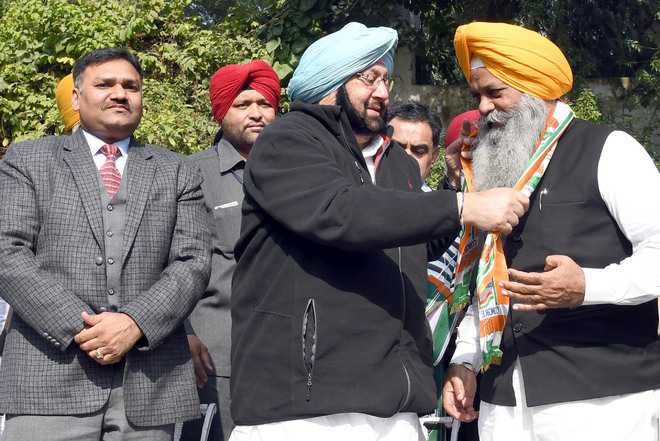 Ex-Akali MP Amrik Singh Aliwal and AAP’s Mahesh Gupta joined Congress in presence of Capt Amarinder Singh on Wednesday.
Ex-Akali MP Amrik Singh Aliwal and AAP’s Mahesh Gupta joined Congress in presence of Capt Amarinder Singh on Wednesday.Aditi Tandon
Tribune News Service
New Delhi, December 14
The Congress is likely to announce its Punjab candidate list in installments with the party still engaging ticket hopefuls to quell chances of rebellion ahead of the 2017 Assembly elections.The fifth meeting of the screening committee will take place tomorrow after which the Central Election Committee chaired by Congress president Sonia Gandhi will meet to clear the first list. The Tribune has learnt that Congress vice-president Rahul Gandhi wants the Punjab leadership to engage all ticket aspirants and placate serious contenders before a final candidate is named. The candidature of former Akali leaders who recently joined Congress remains under debate with Punjab Congress president Capt Amarinder Singh today saying ex-Akalis won’t be fielded without caution. “Ex-Akalis will be fielded only in places where Congress does not have its own candidates. Many of our MLAs earlier went to the Akali Dal. There are many places like Talwandi Sabo and Nihalsinghwala where we don’t have candidates. Former Akalis who have joined us will be fielded in such places only,” Singh said.(Follow The Tribune on Facebook; and Twitter @thetribunechd)Congress insiders have been opposing the nomination of former Akalis and sitting MLAs Mahesh Inder Singh, Sarwan Singh Phillaur, Inderbir Boleria, Deepender Dhillon and Rajvinder Kaur, among others, forcing the leadership to take a calibrated stand on the matter. Capt Amarinder Singh, meanwhile, denied any dispute in the screening panel on candidates and said, “Disputes are only of the nature of whether a father should fight or a son.” Many senior leaders like Rajinder Kaur Bhattal, Lal Singh and Guriqbal Babli are keen that their wards fight elections. This, however, is difficult considering Congress has framed a ‘one ticket for one family’ rule.Many leaders have also sought replacement of their seats citing winnability considerations. This matter is under debate with a Congress insider saying, “It remains to be seen whether exceptions to rules will be allowed.”Quelling rebellion is another priority for the party, with Rahul Gandhi keen on engaging ticket aspirants who will be denied nominations. “We are confident of handling whatever little rebellion we may see just like all political parties see all the time. At the end of our many deliberations, we are sure we will come up with something which will be in the interest of the party,” Congress’ in charge for Punjab Asha Kumari said.It is learnt that debate on around 37 Punjab seats continues while the rest are more or less clear now.
‘Elections in Punjab are a challenge for us’
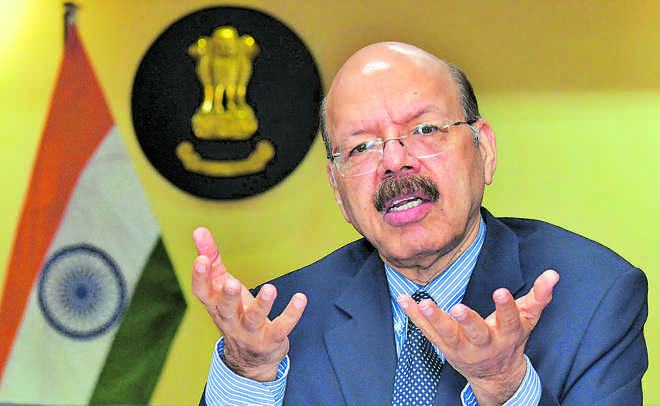 Nasim Zaidi, Chief Election Commissioner. Tribune photo: Manas Ranjan Bhui
Nasim Zaidi, Chief Election Commissioner. Tribune photo: Manas Ranjan BhuiWITH Punjab gearing up to elect a new government early 2017, the Election Commission is strapping up to conduct the polls in a free and fair manner. Over the years, the ECI has come up with innovative methods in pursuit of this objective while also encouraging larger participation in this festival of democracy. The Chief Election Commissioner, Nasim Zaidi, responds to a few questions in an exclusive interview with The Tribune.Conducting each election is a challenging task. The EC has increasingly tightened its grip, with the objective of having free and fair polls. How do you view the upcoming Punjab elections?The elections in Punjab are a big challenge for us. It has an international border with a neighbouring country. There are attendant consequences as a border state various institutions play a role. It has inter-state borders and that has implications. There can be movement of criminals, anti-social elements, drugs etc. Punjab has a history of militancy that adds to our challenge because there could be terrorism, radical activity that can disturb the communal fabric. There are high number of incidents of distribution of cash, liquor and drugs. So, the elections have to be conducted in a free, fair and peaceful manner keeping the sensitive law and order and security situation. We view Punjab as a challenge.You have personally toured Punjab and interacted with authorities. Are you satisfied with the arrangements or are you planning any additional measures?We conducted a review with our regional election officers. Our Deputy Election Commissioners have been touring and we are getting continuous feedback. I think our preparations are in full swing and at an advanced stage. Be it electoral rolls, polling stations, personnel to conduct elections or assessment of our central security forces — they are all in the final stages. We also have to build an appropriate and conducive environment. There are certain pre-election actions to maintain law and order and build confidence in the minds of voters that the environment will be conducive. Action against anti-social elements, gangsters and proclaimed offenders is underway. Similarly, action against drugs is being monitored on a weekly basis. As soon as we declare (elections) there will more activity (against these people) and it will be monitored on a daily basis. There will be increased use of information technology and Voter Verifiable Paper Trail, which assures the voters and also ensures total neutrality of the machinery. Based on the feedback of political parties, we removed the anganwari workers from the registration process. Another interesting thing is officials who have spent three years in an area will be transferred and not be re-posted in the place they were earlier posted, this will be a new feature.There are reports of 57 gangs, 20,000 proclaimed offenders and firearm licences proliferating in the state. Now there is the instance of people getting killed in celebratory firing. How is the Commission viewing this?This is a serious issue in Punjab and our concern is that gangsters, proclaimed offenders (PO) and arms can be used to influence other voters. It is also true there are 20,000 proclaimed offenders, some with as old as 20 years cases. About 8,000 of them are involved in heinous crimes and the rest are missing. As the first set, action is being taken against 8,000 and data has been collected at police station level. The SHOs are being monitored for action against offenders. Some 1,500 to 2,000 POs have been arrested in the last two months and their activity inside the jail is being monitored so that they do not vitiate the election process.As for gangs, we have a peculiar situation in Punjab. The feedback is that these gangs operate as parallel enforcement machinery by offering help to people who do not get it from the legal route. There are some 500 to 600 such people. As of now, up to 400 such people have been jailed and the remainder are being tracked down by the police. A special task force has been made and those in prison are being monitored.On issuance of arms licence, I am told Punjab registered high growth in the past few years — somewhere between 40 per cent and 50 per cent. While (these licences) are for personal protection, their misuse cannot be ruled out. About 3.84 lakh licences are there and the EC has directed that excepting those need to be exempted as per requirement, all other arms have to be deposited. As of today, some 55,000 arms have been deposited voluntarily and that is a good sign.Police neutrality in Punjab has been a question. Your attention may have been drawn to reports of working of halqa in charges. Has the Commission taken note? It has been brought to our notice by way of representations and feedback from political parties. It has been brought to our knowledge about halqa in charges. Political parties and local officials told us that officials like SHO, SDMs, DSP BDOs were seeking instructions from these extra-legal people. When we visited Punjab in October, we told the district magistrates that we expect all the officials to act neutrally and independently. A list of people with bias has been prepared and we will not go into elections under such officials.A problem common across the country is money and Punjab is no exception. In the last elections there were reports of money being transported in ambulances. How are you going to tackle it?Yes, in the last elections we were informed ambulances and police vehicles were used to carry money. This time, be it police vehicles or ambulances, they will be on the radar of our expenditure monitoring system. Ambulances carrying patients will be given preference but they will be on our radar.Drugs is a much-talked-about social issue and it could also lead to a law-and-order situation. The state also has borders with other states. How will the EC deal with it?The drug menace is being looked into from the election point of view so that drugs are not used by political parties or candidates to influence voters. That is our concern. In Punjab, the phenomena of drugs are of three kinds. One is smuggling of heroin from international borders, the second is the inter-state movement of opium, charas, poppy husk or usko bhukhie bolte hain. The third is pharmaceuticals. These are being dealt with separately. On the border, the BSF is being reinforced with additional check posts, CCTVs are there. On the inter-state border, there is coordination with states, CCTVs and check posts being put up. We have decided to work and coordinate with the BSF, the national and state narcotics control bureau, district and sub-district committees. As for pharmaceutical companies, we are dealing in coordination with the drugs controller to check diversion of chemicals at the manufacturing level and also at the distribution level. Raids and seizures will be conducted and we have readied a list of people known to be indulging in smuggling and proclaimed offenders involved in the narcotics trade. They are under our watch and we will act in a coordinated manner with other authorities. Our district committees will carry out an awareness campaign and later on assist in enforcement effort.As compared to earlier polls, after demonetisation the liquidity crunch could affect money distribution in the polls. Yet, there could be other forms of allurement in kind. What will the EC do to check these?Cash distribution will, of course, be less due to the paucity of liquid cash. We will have effective expenditure monitoring, under which are various static surveillance teams and flying squads. This time, flying squads fitted with GPS will be set up so that when they receive complaints their movement can be checked. We are also strengthening the complaint systems by citizens through mobile apps and there will be a coordinated effort to restrain the movement of cash, drugs, liquor etc. We are identifying places where such items are stored. There will be focus on collection and sharing of intelligence by enforcement agencies and follow-up action.Complaint generation, time-bound redressal and strict legal action will be visible. In the last elections, the Central Police Forces were withdrawn in the last 72 hours to secure polling stations. As a result, the field was left open to the candidates and their supporters to distribute money etc. We have learnt a lesson. This time, Central Police Forces will be manning polling stations, hold check posts and remain mobile. 2012 will not be repeated. People are being warned not to indulge in such activities and we are getting more central forces this time.The state government has bought advertising space across highways to project its work. There were reports that just before the elections prime locations in municipalities are cornered by ruling parties. Any steps in this regard?In the non-Model Code of Conduct period we cannot remove them. But the EC will later ensure that the ruling party or the government will not be allowed to use advertising spaces to display their achievements. Even political parties will not be allowed to use other than identified spaces through municipalities and this will be strictly implemented. The Election Commission, following a High Court direction, has issued a set of instructions that no political party can use public or government funds or public places to propagate their symbols. If they violate this directive, they even run the risk of losing their recognition. If our machinery notes or we receive a complaint that the symbol of a political party is displayed on a government advertisement, it will be a serious violation of instructions and action will follow. When we enforce the Model Code of Conduct, you will notice that posters, bills, advertisement run by any political party will be removed within 24 hours. Sometimes we hear that the ruling party captures advertising space. This time, from the date of announcement of the polling schedule, we are introducing the “first-come-first-served basis.” All previous reservations will be cancelled. Either a computerised or register system will be followed to give space on “first-come, first-served basis” so that all parties get an equal opportunity. Of course, it will depend on the resources of the parties.How do you plan to monitor the digital media since the campaign is also being carried in this form?Social media is being widely used but it is so wide that it is very difficult to regulate it. We have evolved a system from the point of view of candidates and political parties. Since the servers of most social media are outside (the country), we have procured a list of public grievance officers of each social media platform like Facebook, YouTube and Twitter. In case of any complaint, we will forward it to them. Candidates will be required to give their social media account when they file their nomination. This is a new instruction for Punjab. If they use social media for advertisement purposes, they will have to file expenses and if candidates or political parties upload any advertisement, it will be subjected to pre-certification. All expenses incurred on social media will be added to their expenditure. If the candidates and political parties publish any content in violation of the Model Code, it will attract the provisions. It will apply across all social media platforms declared by the candidate and will be monitored.The Tirath Yatra scheme that cost the state several crores is aimed at religious communities. How can the EC act before the Model Code of Conduct (MCC) and later?We cannot intervene before the Model Code of Conduct comes into force but after it does we will definitely tell the state government to postpone the activity till after the elections. Since the proposal for e-voting or e-postal ballot is still under consideration, any movement on making it easier for the NRIs to participate in the elections? The Act and relevant rules have not been amended so far. The recommendation is with the Law Ministry to enable the NRIs to cast their vote through one-way transmission of postal ballot by electronic means. Under the current law, NRIs have to come to the polling station to cast their vote. Recently, we launched the NRI survey through our portal and we believe about 66,000 NRIs across (the world) have registered. We encourage them to cast their vote. I would urge NRIs and all citizens to get their names registered as voters.The EC has campaigned for enrollment and for bringing people to cast their vote. What have been the results this time?When we published draft rolls on September 7, we had 1.92 crore voters. As we publish the final list, there are 1.97 crore voters. There has been an increase of 5 lakh which we consider quite encouraging. The number could go up since revision forms will be received till January 5, 2017. Of these new voters, 3.70 lakh are in the age group of 18 or 19 years. The number of women on the rolls also improved and is close to the census figure. We need to create a secure environment, voter awareness campaign. In 2012, Punjab recorded 78 per cent polling and this time we expect the turnaround of 85 per cent. I appeal to all voters first to register and come out vote to elect their worthy representative. We have brand ambassadors like MS Dhoni, Saina Nehwal, Abhinav Bindra and Gurdas Mann encouraging people to take part in the poll process.
BJP workers protest near CM’s Sangat Darshan venue
Stopped by SAD workers as they ‘didn’t figure’ on list of invitees
Gurminder Singh Grewal
Khamano, December 14
Bharatiya Janata Party (BJP) workers protested near the venue of a Sangat Darshan programme here today, alleging that they had not been invited.Led by Bachan Lal and Kuldeep Madan, they alleged that SAD workers did not allow them to enter the venue as “their names did not figure on the list of invitees”. BJP workers raised slogans and returned. This was not the first such instance. On Monday, BJP leaders in Bassi Pathana protested after they were “not allowed” to enter the venue for a Sangat Darshan programme.Earlier today, before the start of the Sangat Darshan, about 25 anganwari workers tried to disrupt traffic on the Ludhiana-Chandigarh road. This happened when the cavalcade of Chief Minister Parkash Singh Badal was to cross the road.The police, however, persuaded the workers to send a four-member team to Chief Minister Parkash Singh Badal for talks. Led by anganwari workers’ union leader Satwant Kaur Kalewal, workers met the CM who called them for talks in Chandigarh tomorrow.
Please CM, get enhanced grant
- At the programme, Badal started by giving out Rs 5 lakhto each panchayat. When panchayat members ofSidhupur villagers raised slogans in favour of the SAD and Badal, the Chief Minister raised the grant to Rs 16 lakh for the village. Later, other panchayats adoptedthis method and received more grant.
VOTE’S ON: ELECTION TOUR WITH THE TRIBUNE
Field open in Samana
Represented by Cabinet Minister Rakhra, the constituency has witnessed development, but it still has its share of Cong, AAP supporters
A road being laid at Rakhra village in Samana constituency. Tribune photo: Rajesh Sachar
Gagan K Teja
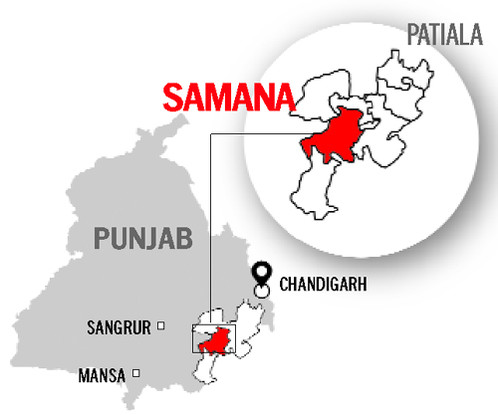

Samana is a keenly contested seat, thanks to its proximity to Patiala city. Since many of its villages have grown into bustling townships, the changed urban-rural equation has made it tough for political parties to predict which way the votes will go.Represented by Cabinet minister Surjit Singh Rakhra, the Jat Sikh-dominated seat saw considerable development, a factor that can consolidate the SAD’s vote share. But this segment also has pro-Congress pockets, while AAP is getting a favourable response from a section of the electorate.The villages now have tiled, concrete roads with better sanitation and enhanced availability of potable water. The urban areas, too, have improved basic amenities. All this, however, doesn’t enthuse voters much, who opine that development is not just about infrastructure. They rue that welfare schemes have eluded this area, with a large number of the poor without blue cards. People also complain that the government has failed to generate employment avenues for thousands of jobless youths. Rakhra is banking on his work and his proximity with the Badals. AAP has fielded Jagtar Singh Rajla, an Akali ex-MLA and a former Congress leader. Those in the fray for the Congress ticket are PPCC senior vice-president Lal Singh’s son Kaka Rajinder Singh, Harry Mann, Gursharan Kaur Randhawa, Kuldeep Singh Nasupur and Rashpal Singh.
Cong resignations: Speaker asks all MLAs to appear in person
Tribune News Service
Chandigarh, December 14
Vidhan Sabha Speaker Charanjit Singh Atwal has asked all 43 Congress MLAs, who have resigned in protest over the SYL issue, to appear in person.The MLAs would be heard for three days, beginning December 20.Led by Punjab Congress president Capt Amarinder Singh and Congress Legislature Party (CLP) leader Charanjit Singh Channi, most of party’s 42 MLAs and an Independent associate member of the party, submitted their resignations to Assembly Secretary Shashi Lakhanpal Mishra on November 12.The resignations were given ahead of the emergency session of the Vidhan Sabha on November 16.Atwal said it had to be confirmed that the MLAs had not tendered their resignations under pressure.“All MLAs have been given different time slots to appear in person,” the Speaker added.
Kotkapura shuts doors
A banner, announcing poll boycott, put up by residents of a locality in Kotkapura. Tribune Photo\
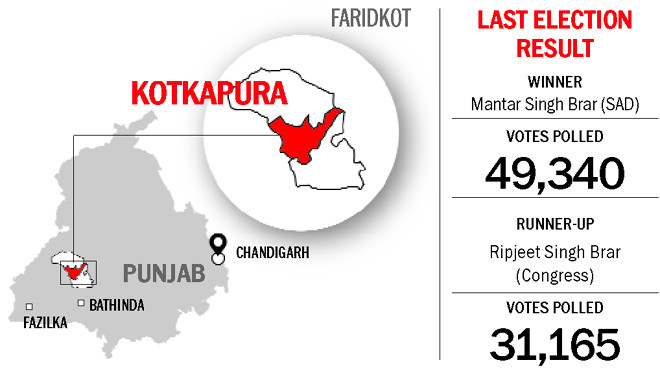
Balwant Garg
Upset over politicians’ indifference to their problems, a section of Kotkapura voters has decided to boycott the Assembly elections. The residents of many localities in the town, which was once known as the biggest cotton market of Asia, have put up flex boards, banning the entry of politicians.Pointing towards the heaps of garbage and pools of sewage, residents of Ward No. 18 and 19 also draw the visitor’s attention to the SAD-BJP government’s slogan painted on wall: “Raj Nahi Seva” (service, not rule).“Be it the Akalis or the Congress, there is no difference. Like migratory birds, they descend only at election time, making a beeline and seeking our vote as well as support. Once the election din dies down, these leaders become inaccessible,” says Gurbachan Singh, a retired teacher who resides in Ward No. 18.Vivek Kumar, a shopkeeper, feels that the political parties are raking up issues that don’t concern the common man. “The Akalis are claiming credit for unprecedented development in the past over nine years. The Congress is promising more development. It’s all mere rhetoric as a majority of the local residents are still awaiting supply of potable water,” he adds.His views are echoed by Gurmail Kaur, a housewife and resident of Dr Harpal Street, who says mud-slinging is eclipsing the key public issues.Residents complain that sewage water floods their streets and drinking water is scarce. All our requests to the politicians and bureaucrats in the past many years have fallen on deaf ears, they lament, anger writ large on their faces.
7 lakh stoves for BPL families to have CM stickers
 Pictures of Chief Minister Parkash Singh Badal and his deputy on a gas stove box. Tribune photo
Pictures of Chief Minister Parkash Singh Badal and his deputy on a gas stove box. Tribune photoBalwant Garg
Tribune News Service
Faridkot, December 14
The state Food and Supply Department has sent over 7 lakh stickers, having pictures of the Chief Minister and the Deputy Chief Minister, to all LPG distributors across the state. These stickers are to be pasted on the boxes of LPG stoves which are to be distributed among BPL families in the coming days.Funded by the state government, these seven lakh free-of-cost LPG stoves are being distributed to all beneficiaries of the Pradhan Mantri Ujjwala Yojana (PMUY). Under the scheme, while a free LPG gas connection is being provided by the Union Government, the Punjab Government is paying for gas stoves (Rs990 each) for the beneficiaries in the state.All these LPG gas connections and stoves are to be distributed before December 31.The move to put up stickers is apparently to extract political mileage in the upcoming elections. The LPG distributors have been asked to paste these stickers on the LPG stove and also insert a printed message in the LPG packing box, giving the CM’s message about the scheme.Through the message, the CM empathises with poor women who have to face smoke while cooking. “These free-of-cost gas stove with an LPG connection will make cooking meals convenient for all you women,” reads the CM’s message. However, there is no mention of the Pradhan Mantri Ujjwala Yojana in the CM’s message.As per the approval format, provided by the oil marketing companies — Indian Oil, Bharat Gas and Hindustan Petroleum — the gas stove manufacturing companies have already printed a picture of PM Narendra Modi on the packing box of the gas stove.The gas stoves, costing Rs990 each, have been designed by the oil marketing companies to make these affordable for all beneficiaries under the PMUY. But in Punjab, the government has released Rs50 crore to the IOC to distribute the stoves free of cost.
MAJHA FATEH RALLY
AAP pits Shergill against Majithia
Party volunteers from Malwa and Doaba turn up as well
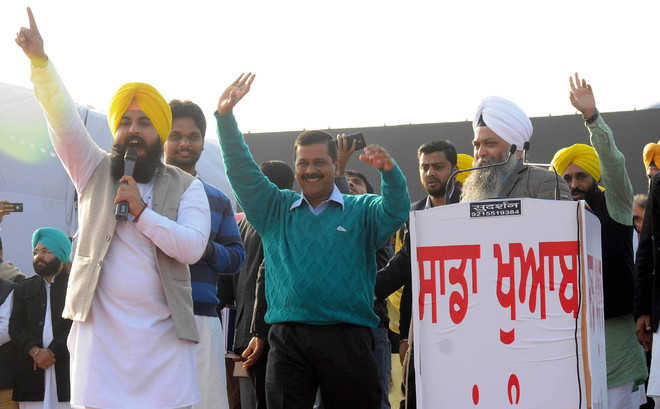 AAP convener Arvind Kejriwal, state party co-incharge Jarnail Singh and AAP youth wing chief Harjot Bains (L) at a rally near Amritsar on Wednesday. Tribune Photo: Munish Sharma
AAP convener Arvind Kejriwal, state party co-incharge Jarnail Singh and AAP youth wing chief Harjot Bains (L) at a rally near Amritsar on Wednesday. Tribune Photo: Munish SharmaTribune News Service
Majitha, December 14
Aam Aadmi Party (AAP) convener Arvind Kejriwal today pitted Himmat Singh Shergill against Cabinet minister Bikram Singh Majithia in the Assembly elections.The SAD has fielded Majithia from Majitha.The announcement was made at Majha Fateh Rally here. AAP volunteers from Malwa and Doaba reportedly turned up in large numbers.The Delhi Chief Minister proposed the candidature of Shergill from the dais and sought public’s nod. “Our candidate will hand out a convincing defeat to Majithia.”Shergill is a lawyer at the Punjab and Haryana High Court and party’s legal cell in charge. Earlier, he was fielded from Mohali.“We have all gathered here to uproot Majithia from his constituency. The massive gathering gives me confidence that Majithia will forfeit his deposit,” Kejriwal said.In Majithia’s home turf, he again referred to the criminal defamation case registered against him by the minister in an Amritsar court. And again dared Majithia to get him arrested before the elections otherwise “the public will catch hold of him from the collar and put him behind the bars for flourishing drugs trade in Punjab”.The Delhi Chief Minister accused Majithia of having links with the drug mafia for the past 10 years.AAP leader Sukhpal Singh Khaira distributed pictures of Majithia, Chief Minister Parkash Singh Badal, his deputy Sukhbir Singh Badal, and Ajnala MLA Amarpal Singh Boni sharing stage with Maninder Singh alias Bittu Aulakh, one of the accused in the Bhola drug racket case, to prove the point.Kejriwal termed Punjab Congress chief Capt Amarinder Singh as chacha and claimed he earned immunity for his bhatija (Majithia) during the Congress regime at the Centre. “Amarinder never wanted Majithia to lose. Last time, the Congress had fielded a weak candidate against Majithia,” he claimed.Dera event played spoilsport?A programme by Beas dera chief Gurinder Singh Dhillon was scheduled in Majitha on Wednesday. Speculation was rife that the programme was scheduled to affect Kejriwal’s rally. The dera chief shares family ties with Majithia.
Cong MLA promises govt job, revival of sick industrial units in Amritsar West constituency
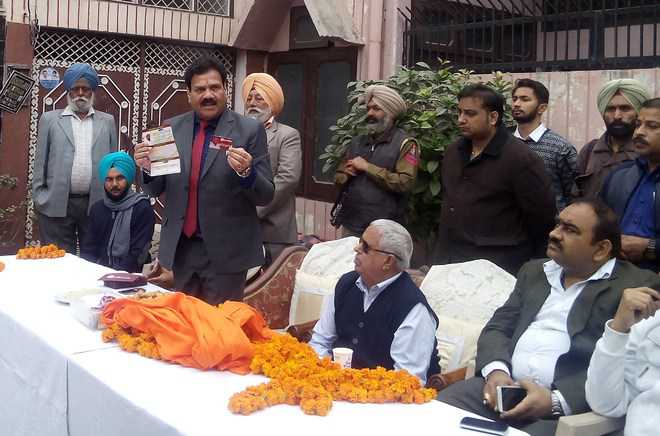 Congress MLA Raj Kumar Verka during a meeting in Amritsar on Wednesday. Photo: Munish Sharma
Congress MLA Raj Kumar Verka during a meeting in Amritsar on Wednesday. Photo: Munish SharmaTribune News Service
Amritsar, December 14
Congress MLA Raj Kumar Verka today promised the people government job to at least one educated youth of a family, besides reviving sick industrial units in the Amritsar (West) constituency here.He also assured the people to remove iron grill, put up under the bus rapid transit system (BRTS), on either side of the road, which had hit business of shopkeepers hard.While addressing the gathering, Verka said it was the Congress government, which initiated various development projects in the city, including laying sewerage system under the JICA project. Now, the SAD-BJP government was taking the credit for it by fooling people, he added.“However, people are wise and they know all false tactics of the ruling combine, which is only interested in their own development,” he said.The Amritsar (West) constituency had always faced neglect since SAD-BJP government came to power 10-years ago, he added. He said people were facing the scourge of drug abuse.“Being in Opposition I could not carry out development works in my constituency to the extent I wanted. The ruling government has discriminated constituencies represented by Congress candidates,” he added.He said whatever development being carried out in the city was started during the tenure of former Prime Minister Manmohan Singh.The Congress government was committed to curb unemployment by providing government jobs to at least one member of each family and until that happened it would give Rs 3,000 as allowance to unemployed youth, he added. He said Capt Amarinder Singh had even given an affidavit in this connection.Among others, who were present during the occasion, include PPCC vice-president Jagdish Sharma and PPCC sports cell vice- chairman Dimple Arora.
‘Captain Smart Connect’ scheme receives overwhelming response in Amritsar
Tribune News Service
Amritsar, December 13
The scheme ‘Captain Smart Connect’ launched by Punjab Pradesh Congress Committee chief Captain Amarinder Singh has received an overwhelming response in Amritsar.Under the scheme, the Punjab Congress has announced to distribute 50 lakh smartphones among youth in order to empower them if comes to power.A total of 3,49,724 entries have been received for the smart phones in the district.Around 59 per cent were male and 41 per cent were female, who got themselves registered under the scheme.Congress workers in Amritsar made various arrangements to ensure the maximum participation of youngsters to get themselves registered under the scheme. Workers also set up various registration desks across the city to make people aware of the scheme.The Punjab Congress Express has also been visiting villages, spreading the message of the scheme to the people.They are also helping them in the registration process where they do not have internet facility.On November 20, ‘Captain Smart Connect’ Scheme was launched with an objective to empower the youth by digitally connecting them with the world, and enabling them to explore opportunities for themselves.During the first phase — November 20 to 30 — around 20 lakh people registered under the scheme. Overwhelmed by the response and requests, the last date of the first phase was extended till December 10.
Fact File
- A total of 3,49,724 entries have been received for the smartphones in the district. Around 59 per cent were male and 41 per cent were female, who got themselves registered under the scheme
- Congress workers in Amritsar made various arrangements to ensure the maximum participation of youngsters to get themselves registered under the scheme. Workers also set up various registration desks across the city to ensure smooth registration
Over 2.7 lakh register for Captain Smart Connect Scheme from city
Patiala, December 14
Patiala bagged one of the top spots where youths registered themselves for droves to receive free smartphones after Captain Amarinder Singh launched his flagship programme Captain Smart Connect Scheme. Of the total 30 lakh registrations in Punjab, about 2.7 lakh registrations came from Patiala, contributing whooping 9 per cent to the total registration.
Launched on November 20 as Captain Amarinder Singh’s landmark initiative for the youth of Punjab, the scheme promised to empower the youth by digitally connecting with the world and enabling them to explore opportunities for themselves.The scheme was seen very popular among young women in Patiala. Of the total registration from Patiala, about 46 per cent were done by women.Congress workers in Patiala made various arrangements to ensure that the maximum number of youths register themselves for the scheme. The registration desks set up by Congress workers and the IPAC ground team across the city have helped people register their smartphones smoothly. The Punjab Congress Express also spread the message about the scheme to every nook and corner of the city.To avoid the delay in the implementation of this scheme, registrations were opened at the time of the launch (November 20) itself. The first phase (November 20-30) saw 20 lakh people register for their free smartphones. Overwhelmed by the response and conceding to the multiple requests from ground, the last date for registration was extended by 10 more days – till December 10.The scheme hit the right target audience in the city as 53 per cent of the registered youths were between the age of 18 and 25 years, while the other 43 per cent were between the age group of 26 and 35 years. About 4 per cent of the people, who have registered for this scheme, are below or above the age bracket of this scheme. i.e. 18-35 years. — TNS
The scheme
- The Captain Smart Connect Scheme is one of Captain Amarinder Singh’s flagship programmes where he promised to give smartphones to the youths. In return, the youths have to promise that they would stay away from drugs.
Another AAP leader joins Cong
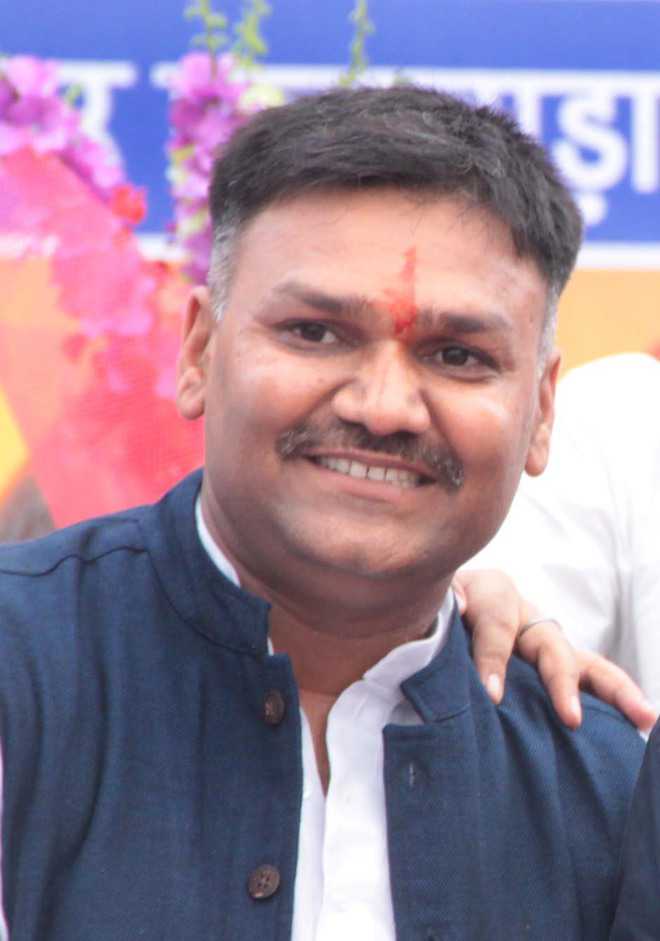 Mahesh Gupta
Mahesh GuptaTribune News Service
Jalandhar, December 14
Amidst internal strife over the Cantt candidature, the Aam Aadmi Party in Jalandhar got another blow with party leader Mahesh Gupta joining the Congress today. Gupta was the vice-president of the trade, transport and industry wing of AAP in the district.Gupta’s entry into the Congress casts shadow over the party’s candidature from the Jalandhar North constituency where he was expecting a ticket. Gupta claims he will now be working against AAP candidate Mahesh Bhagat in the constituency. Gupta is a representative of the Aggarwal community and also the general secretary of the Vaishaya Federation. His exit can affect the party in terms of his larger role within the Aggarwal and trading community.He joined the Congress today at Delhi in the presence of Punjab Pradesh Congress Committee president Capt Amarinder Singh. Gupta had organised the Agrasen Jayanti event for the party on September 25, which had been attended by AAP supremo Arvind Kejriwal. Days after the event, the seat went to candidate Gulshan Sharma.Gupta said, “I was backing the AAP wholeheartedly with all my supporters. I had high hopes from the party, but after promising me a ticket, the party chose me as an office bearer without even asking me. There is a difference between what the party says and does. I worked day and night for the party, but the ticket finally went to someone else at the last moment.”While the party also faced a rebellion at the Kartarpur seat after the candidature was allocated to Dalit leader Chandan Grewal, the recent constituency to face rebellion in Jalandhar by eminent leaders has been Jalandhar Cantt where Hockey veterans Rajbir Kaur, Jagdeep Gill, journalist Major Singh, former principal Jasbir Kaur Gill, AAP founder member Inderjit Singh Bhalla, media coordinator Atam Parkash Bablu and Narinder Chawla have resented the candidature of HS Walia.While the ensuing face-off also saw allegations and counter allegations being hurled by both sides against each other, with Rajbir Kaur even threatening to sue Walia for defaming her, party in-charge Sanjay Singh also visited Cantt leaders on Tuesday to contain the rebellion.In a meeting with Rajbir Kaur, Jagdeep Gill, Jasbir Kaur Gill, Inderjit Singh Bhalla, Atam Parkash Singh Bablu and Narinder Chawla and former Nakodar candidate Jagtar Singh Sanghera, Sanjay Singh attempted to broker peace among both the sides. However, while the Cantt leaders remain steadfast on their stance, another meeting of the leaders might be scheduled by December end, leaders said. Meanwhile, removed from the Nakodar constituency’s candidature, Sanghera has been made party state vice-president and spokesperson.The joining of Mahesh Gupta in the Congress happens a day after AAP national executive member Yamini Gomar quit the party’s primary membership and lashed out at the party calling it anti-Dalit.
Badals hurry doles to vault polls
CHANDIGARH: Barely weeks before Punjab voters were gearing up to give their verdict in January 2012 assembly elections, `15,000 cheques began reaching abruptly the ‘poor’ voters for house repair.
Using this safe mode launched just days before the election commission sounded Punjab assembly poll bugle on December 24, 2011, the Parkash Singh Badal government had quietly pumped in about `50 crore to reach a set of voters in select districts.
This was one of the many covert and overt ploys of the Akali Dal to retain power by outwitting the overconfident Congress.
And the smartly managed gamble yielded results as the Akali Dal-BJP combine retained power with a bang.
Now, the double-barrel Akali Dal top guns — party patriarch Parkash Singh Badal and his son and party chief Sukhbir Singh Badal — are using every trick before the poll code comes into force. Their sole objective: Rule Punjab for third consecutive time. “Our cadre is charged up and ready to fight to win,” says Sukhbir Badal.
However, in what the analysts say “hurry and worry” of the Badal duo, the nervousness is rising in the Akali Dal camp with the assembly poll turning out to be a three-horse race. The strong anti-incumbency of its 10-year rule—marked equally by blots and bright spots—is giving jitters to the ruling Akali Dal-BJP combine.
And to dodge this disadvantage, the master-strategist Badal Sr has accelerated his speed of holding ‘sangat darshans’ and the game of sanction-on-the-spot development grants that ranges between `20 crore and `25 crore to the host assembly segment.
For an example, in last one week alone CM Badal doled out `40-crore developmental grants during his favourite ‘sangat darshan’ exercise in three reserved segments—Nabha, Chamkaur Sahib and Bassi Pathana—where party has fielded fresh faces.
On Tuesday, CM Badal in Kalanaur—the place of emperor Akbar’s coronation in Gurdaspur—distributed `2.61crore compensation to farmers.
The overt strategy of the father-son-duo is that while Sukhbir is attempting to set development as poll agenda (see box—inauguration spree), Badal Sr is keeping himself personally and firmly plugged with the public via the ‘sangat darshans’ and liberal dose of grants.
Among other raft of populist steps, CM Badal has taken in last two-weeks include ‘welfare’ of his party loyalists. Badal parked over 150 party activists as chairman or members in different welfare boards ahead of the poll code.
In a pre-poll job bonanza, state cabinet created over 3,300 posts, besides regularising 27,000 employees hired on contract
Almost every week, Badal cabinet is meeting and taking plethora of populist decisions. Sources say every financial resource is being squeezed, including loan from banks. Punjab Infrastructure Development Board (PIDB), that funds most of CM Badal’s pet projects, in the last cabinet meeting had sought nod for more loans and stating that its financial health had collapsed.
But the desperation to bulldoze the system by the Badal dispensation is such that bureaucrats who are finally mustering courage to say “no” are being dumped.
“In the past two months, political masters’ brief is to just do this… Every officer is eagerly awaiting for poll code,” says an officer. The sense of urgency is palpable in resourceful Sukhbir Badal’s daily drill. In the past one month, Sukhbir has inaugurated or laid foundation stones of over 30 mega or minor projects, beginning with the classy heritage street around the Golden Temple in Amritsar.
“This carpet bombing of sorts (read inauguration spree) is aimed at building positive public perception and deflecting negative public opinion,” says an aide of Sukhbir Badal.
At the heart of Badal government’s last ditch voteclinching sops is almost every electoral segment. Gymnasiums and free sports kits to youth, utensils to mahila mandals and free pilgrimage for oldies.That’s just a glimpse of the size and scale of the prepoll doles.
Former SAD MP Aliwal joins Cong
Pakistan has no role in the Nabha jailbreak case. Punjab deputy chief minister Sukhbir Singh Badal is behind the jailbreak as he wants shooters to eliminate me and AAP supremo Arvind Kejriwal in view of the upcoming elections in Punjab. BHAGWANT MANN, AAP leader and Sangrur MP He (Mann) is getting hallucinations that Badals are after his life because of his habit of consuming excessive alcohol. Actually, Arvind Kejriwal has scripted his (Mann’s) obituary by coaxing him to contest from Jalalabad against Sukhbir Badal. PREM SINGH CHANDUMAJRA, SAD leader and Anandpur Sahib MP
CHANDIGARH : Former Ludhiana MP Amrik Aliwal joined the Congress on Wednesday in presence of party president Captain Amarinder Singh. Mahesh Gupta and Gurbans Singh Punia of AAP too joined the party. Aliwal, a former Punjab Agro Industries Corporation chairman, said, “The Badals were running the party like their personal fiefdom, in a completely undemocratic manner, with no concern for the people of the state, who were struggling to make both ends meet. I have witnessed first hand the protection given by the Badals to criminals and miscreants and noted that not a single case had ever been fairly investigated under the Akali rule.”
 Punjab Congress chief Capt Amarinder Singh with Amrik Aliwal in
Punjab Congress chief Capt Amarinder Singh with Amrik Aliwal in
Welcoming them into the party, Amarinder said Amrik’s his decision to quit the party and join the Congress indicated the “deep rot” in the Akali Dal under the Badal leadership.
Mahesh Gupta, an AAP ticket aspirant from Jalandhar North, and Gurbans Singh Punia, the AAP zone in-charge for Patiala, Ludhiana and Jalandhar, also joined the Congress.
CAPT SEEKS NOTE BAN ROLLBACK; WRITES TO CJI
Meanwhile, dubbing demonetisation a “complete failure” and its implementation a “total fiasco,” Capt on Wednesday sought its rollback and intervention of chief justices of India and the Punjab and Haryana high court. In a letter to the chief justices, he urged them to treat his communication as a PIL.
Congress leaders sharing rooms and towels at Delhi’s Punjab Bhawan
State party chief Amarinder says Akalis can pitch tents outside Punjab Bhawan if they are not getting rooms
NOT JUST FIRSTTIMERS OR DEFEATED PARTY CANDIDATES ARE LOBBYING FOR TICKETS. SITTING MLAs TOO ARE SPENDING SLEEPLESS NIGHTS
CHANDIGARH: What extent can you go to for a Congress ticket? In case of Punjab, party’s ticket hopefuls have not only found two voters per booth, paid ₹10,000 for general seats and ₹5,000 for reserved seats and signed a loyalty pledge that they would not rebel against the candidate announced by the party.
That was just for the preliminary round. Two back-to-back poll drubbings in Punjab have not dented the party’s appeal among contenders.
As the contest enters the final round at Delhi where the party high command takes a final call, the Punjab Bhawan in the national capital has become a “shared dormitory” with some rooms having more than six occupants, admit Congress leaders.
And it is not just first-timers or defeated candidates who are lobbying for tickets. Congress sitting MLAs too have been spending sleepless nights at the Punjab Bhawan fearing they may be dropped as per “surveys” of Punjab Congress president Captain Amarinder Singh.
The Captain has also set the pulse of many political dynasties and senior leaders racing by bringing in ‘one family, one ticket’ rule, advocating Hindu faces should be fielded from Hindu-majority seats, ruling out seat swaps for MLAs from general seats and announcing at least 30 seats for youth and “fair representation” for women. Not to forget, all candidates need to be “winnable” too!
Among those not worried is MLA Kuljit Nagra, who is busy campaigning in his constituency, Fatehgarh Sahib.
“I was also there at Punjab Bhawan in Delhi. But the situation had changed from sharing rooms to sharing even towels,” he quips.
AMARINDER AMUSED
It also seems to be one of the pressures on the party to release the list. Amarinder too is amused.
“The whole of Punjab is sitting here. In the army, eight people shared a tent. Probably, the Akalis cannot find a place to stay. In that case, they too can pitch tents outside the Congress Bhawan. But how can they serve eviction notice or charge penalty from Congressmen who are paying the rent?” he says.
The Bhawan authorities admitted that the government has asked them to get “illegal” occupants a evicted. But none of the officials agreed to be quoted.
The Punjab Bhawan sees such footfall of Congress ticket contenders every five years when the state heads to polls. Located in the heart of Delhi near the Congress office, the Bhawan has four categories of rooms and the rent starts from an unbelievable ₹30 to ₹800 for “ordinary suites” while the “minister’s suite” is available for ₹30 in category I and ₹930 in category IV.
The penalty? It is ₹1,530 for both ordinary and minister’s suites. That’s too not much considering each candidate has shelled out ₹10,000 for applying for a ticket.
CEC Nasim Zaidi talks tough against biased officials, halqa in-charges
We are keeping a list of officers who are considered to be biased… I can say that the elections will not be conducted with these officials. NASIM ZAIDI, chief election commissioner
From page 01 CHANDIGARH: Cautioning bureaucrats and police officials who allegedly function as per the wishes of unelected halqa (constituency) in-charges of the ruling Shiromani Akali Dal (SAD), chief election commissioner (CEC) Nasim Zaidi has said that such “biased” officers will not be involved in conducting the Punjab assembly elections due early next year.
“We are keeping ready the list of officers who are considered to be biased, who are not neutral, [those] who are playing to the gallery… We will have their replacements [done] with officials who are neutral,” Zaidi told HT via video conference, flagging the writ of halqa in-charges as a “serious concern”.
Listing activities of crossborder institutions, drugs, 57 gangs on the loose in the state, and anti-social elements operating through the inter-state border, as key challenges, Zaidi said, “In previous elections, a lot of drugs, money and gifts were distributed.”
It was during the Punjab visit, Zaidi said, that the EC received information of lowerlevel bureaucrats and police officials going by instructions of the halqa in-charges.
He pointed out that deputy commissioners and district police chiefs were directed to closely watch the conduct of these officials.
“We have also directed state administration, police, chief electoral officer and district authorities that their conduct will be under watch,” the CEC said. Also the EC, he said, will place a very strong observation system at the ground level to ensure that officers work neutrally.
He further listed the key challenge of preserving the “communal fabric” of the state in context of the “historical background of militancy”.

The CEC said that to “attack” the use of drugs in elections, committees at the sub-divisional level have been formed. He underlined “inter-state movement of opium, charas, poppy husk, and synthetic drugs coming from the neighbouring states in very serious proportion”. “We have list of people involved in these activities,” he said.
Poll panel to go tough on paid news
ELECTION COMMISSION FORMS A TEAM TO MONITOR NEWSPAPERS AND IDENTIFY PAID NEWS, TO ASK CANDIDATE TO INCLUDE EXPENSES IN POLL EXPENDITURE
CHANDIGARH : The Election Commission (EC) has decided to take tough measures to curb the practice of paid news during the forthcoming assembly polls.
During the past Lok Sabha and assembly polls, political parties and candidates have been using the media, particularly newspapers, to sway voters in their favour by getting news printed in their favour by paying for it.
“The issue has taken huge proportions because the paid news, which actually has no truth, is against the essence of free and fair polls. We have decided to regulate it in the coming state polls,” announced Punjab chief electoral officer (CEO) VK Singh.
The CEO informed that he has put a mechanism and a team in place which would scrutinise all newspapers, after the announcement of polls and imposition of the model code of conduct, to identify paid news.
“Our team will send notices to the candidates or political parties in case we find any paid news given by them, make it public by uploading these news items on our website on day-to-day basis, asking the voters to be careful about the facts in the said news item ,” he said.
Also, if the candidate or a political party fails to clear its stand within 24 hours of EC notice, the commission would take ex-parte decision and ask them to include expenses of the paid news into their poll expenditure, he said.
The EC team would impose cost of paid news on the basis of rates of advertisements offered by the newspaper in which the news is printed, by calculating the total cost from the space consumed by the paid news, he added.
During a meeting with chief election commissioner (CEC) Nasim Zaidi in Chandigarh last month, different political parties had flagged the issue and called for a mechanism to check the practice. Sources said CEC is concerned about the issue and had instructed its state office to take tough measures in this regard. They said some political parties and their leaders also want the EC to curb the practice of paid news.

